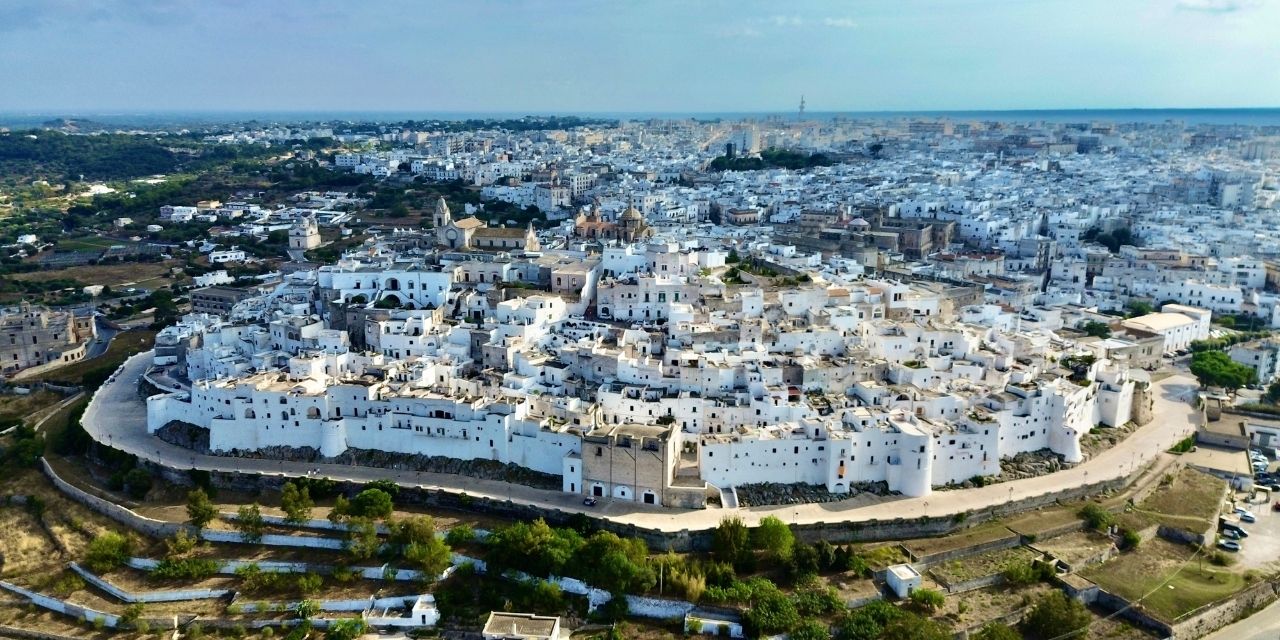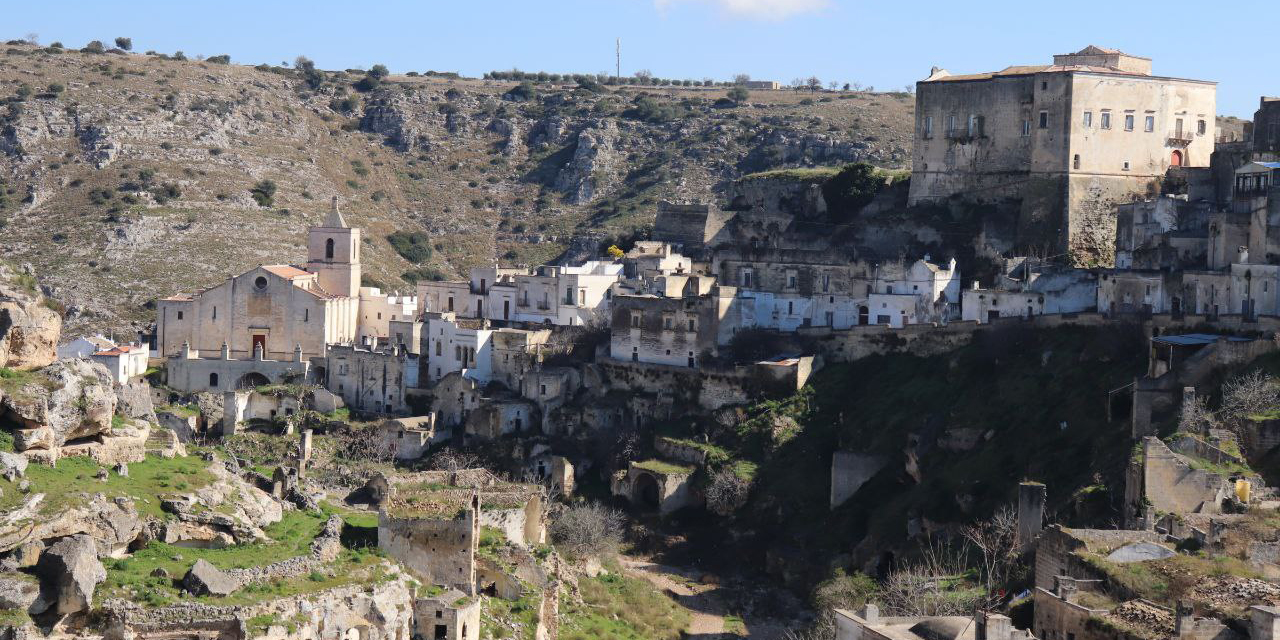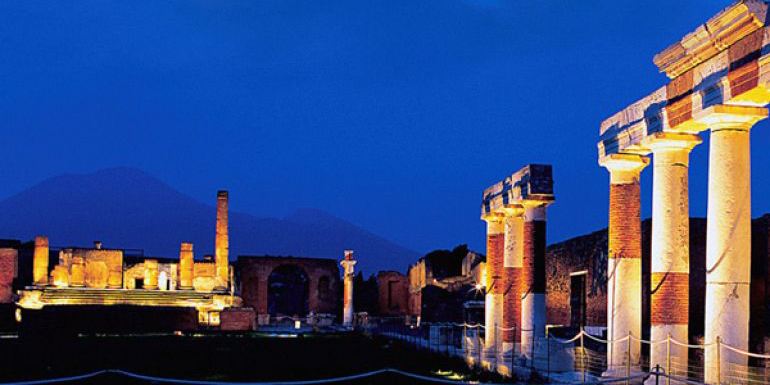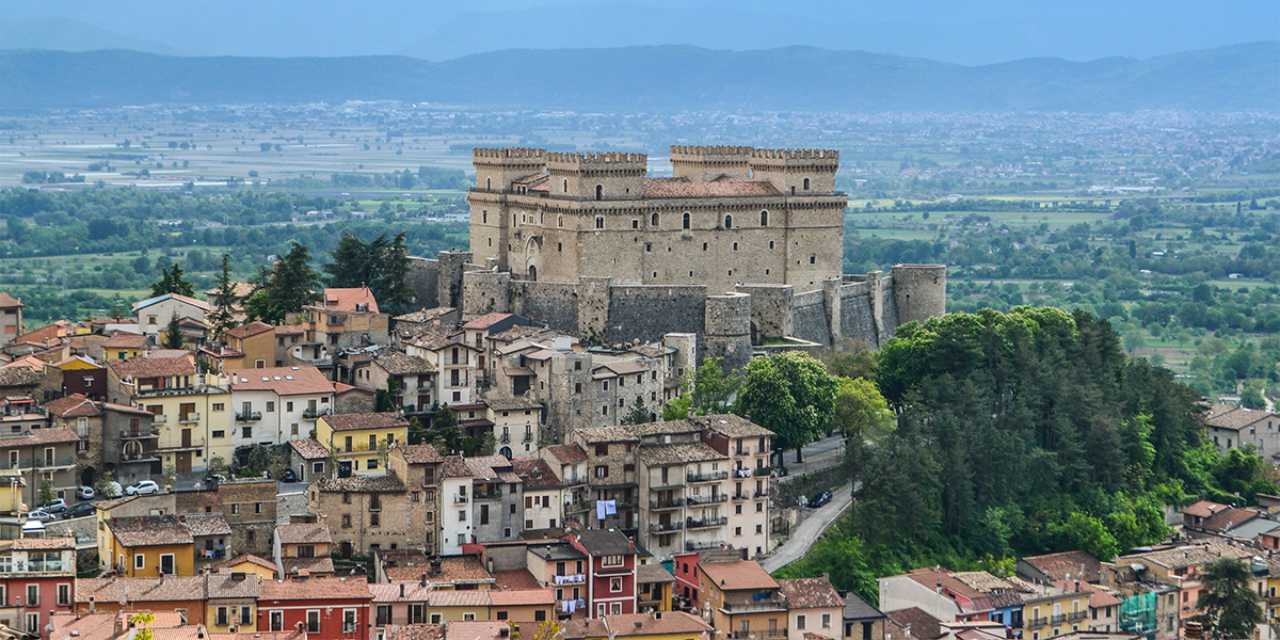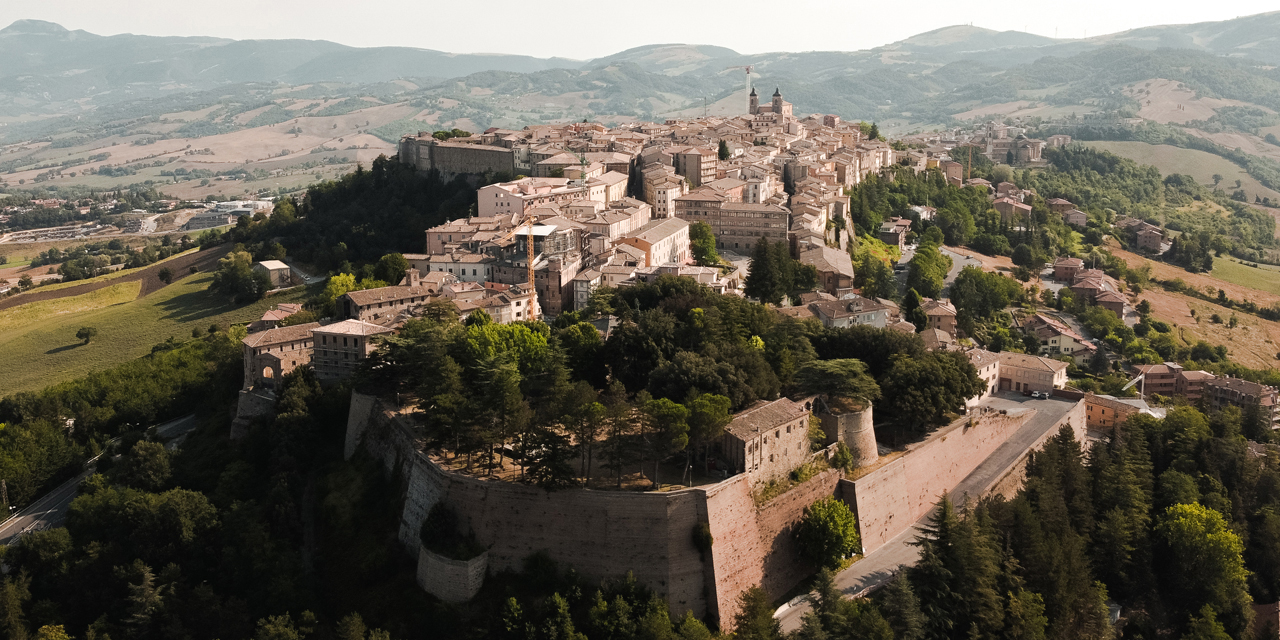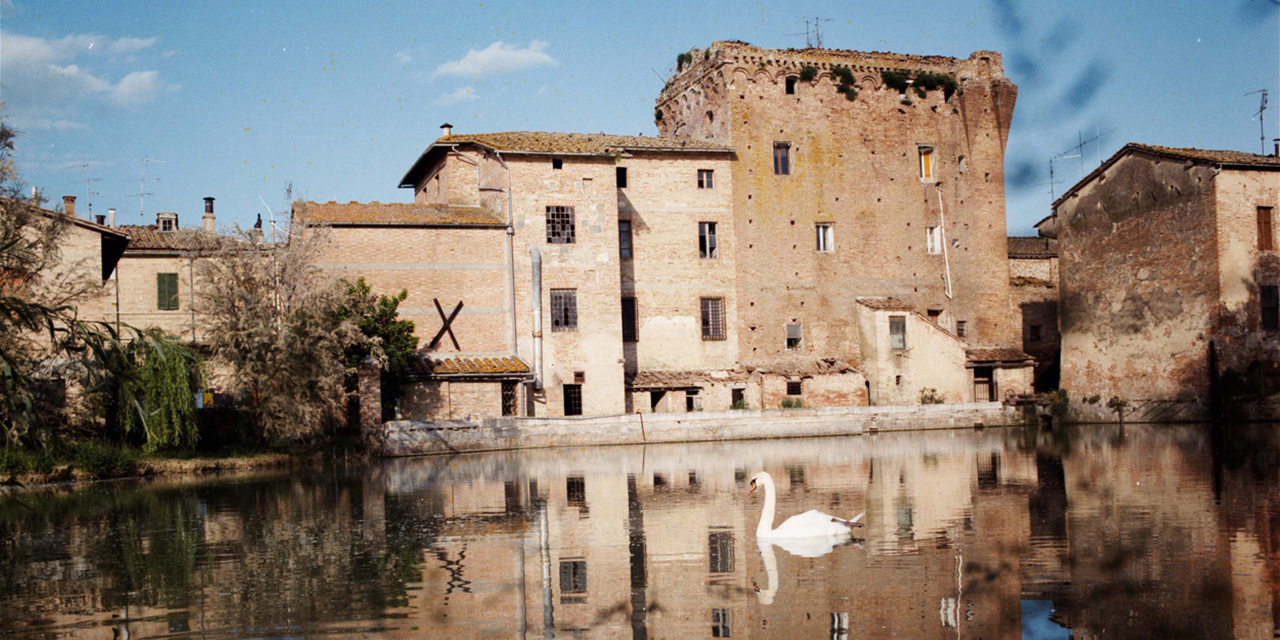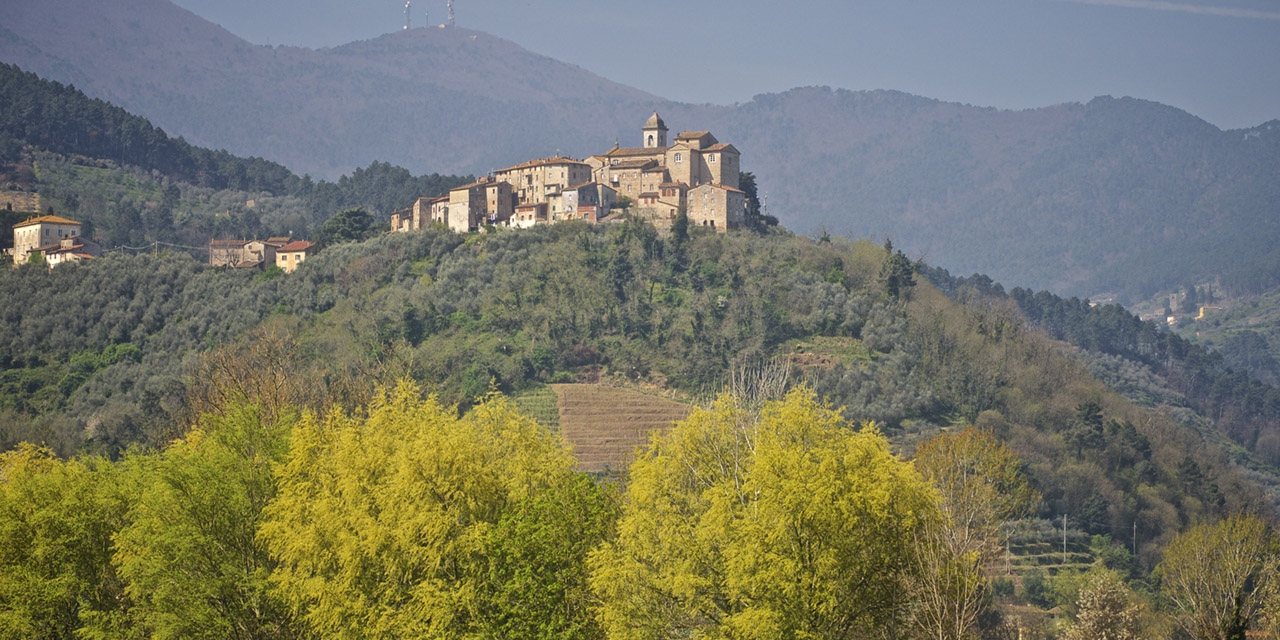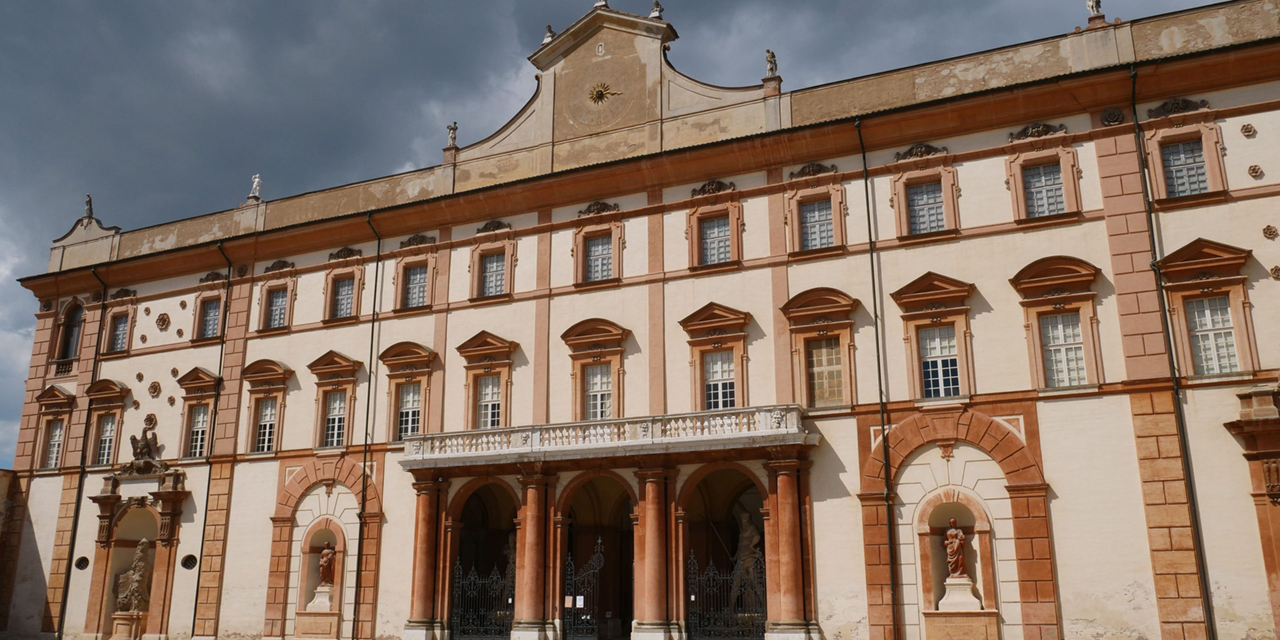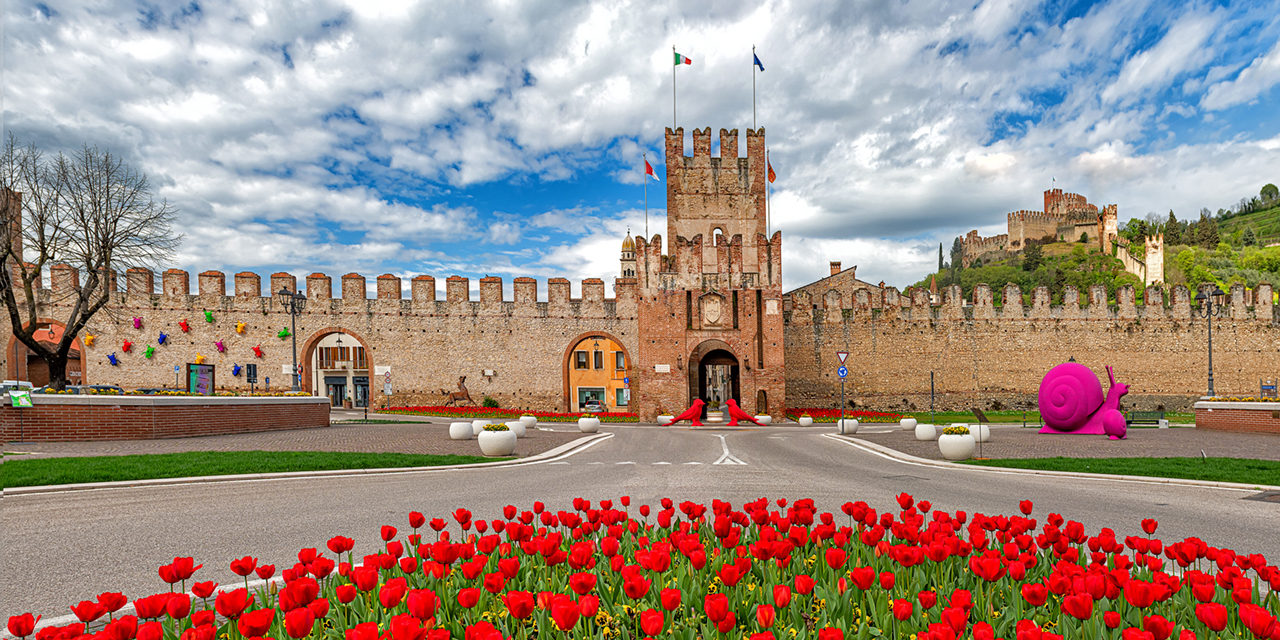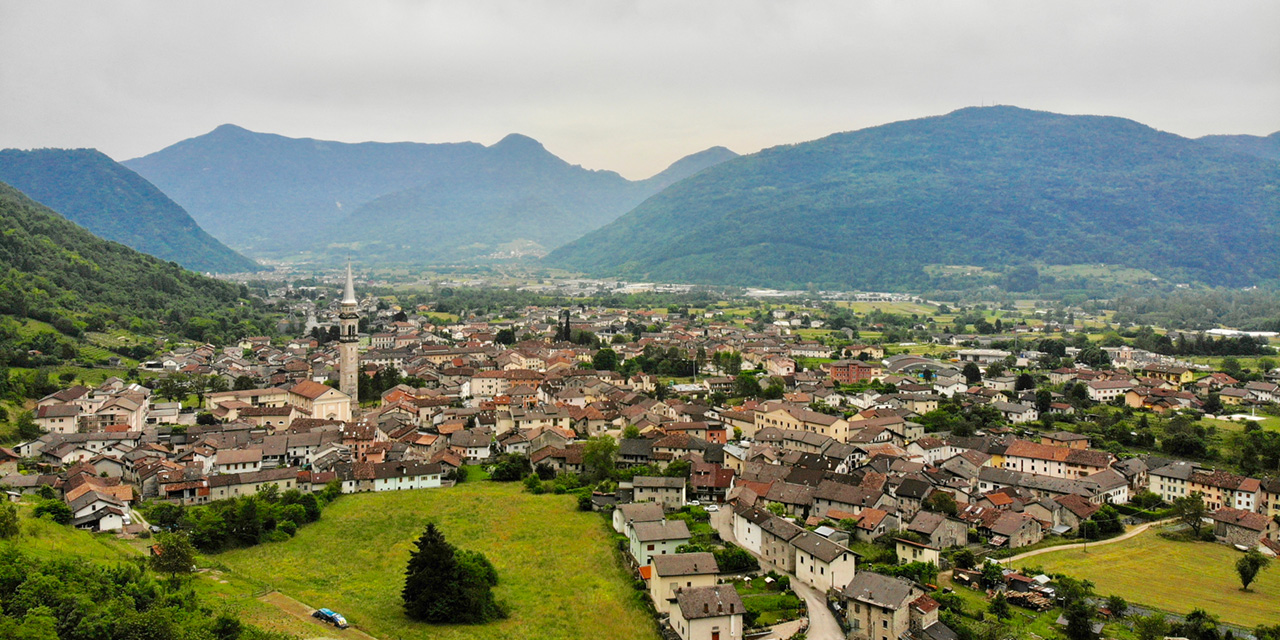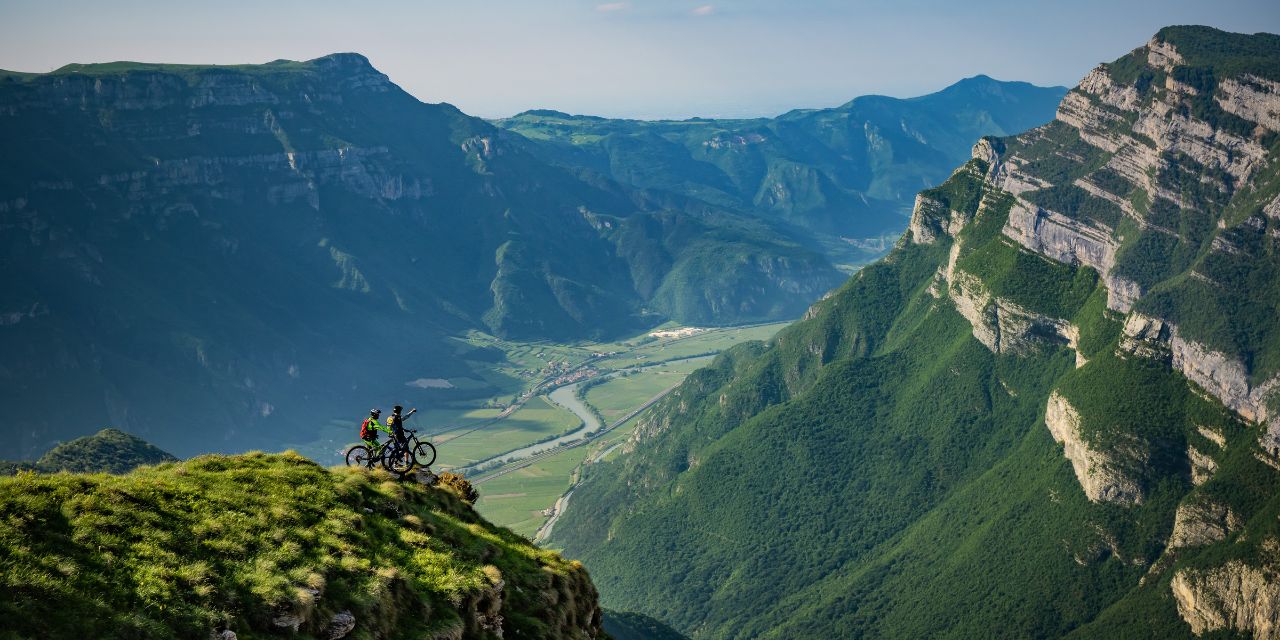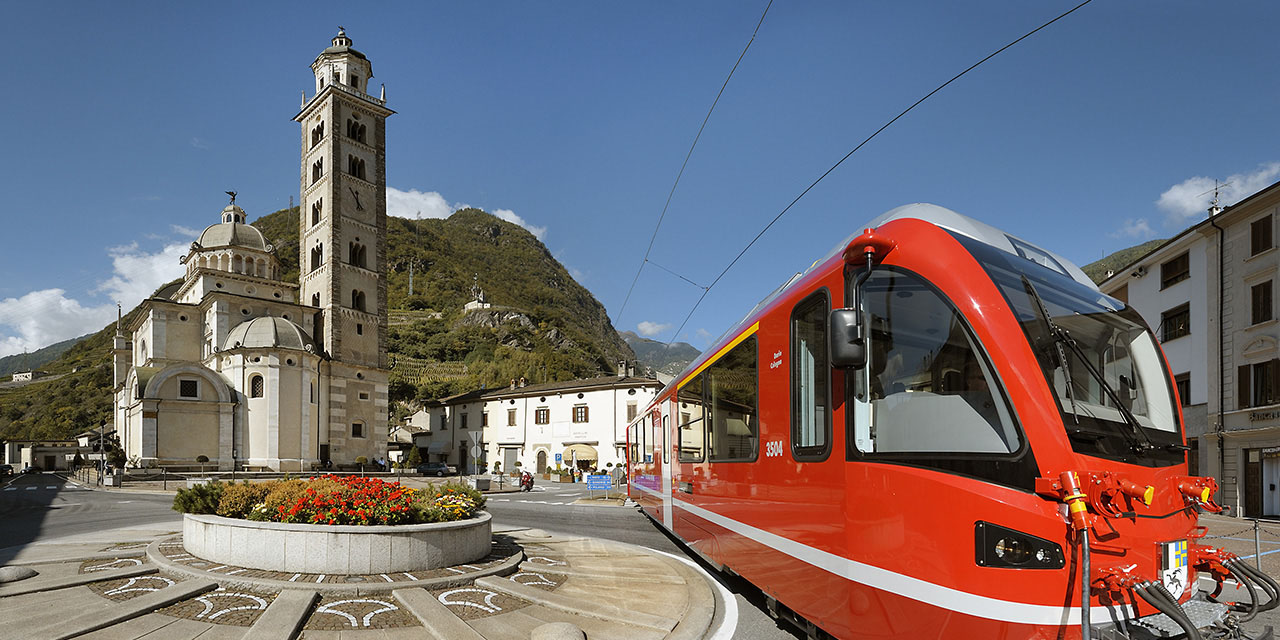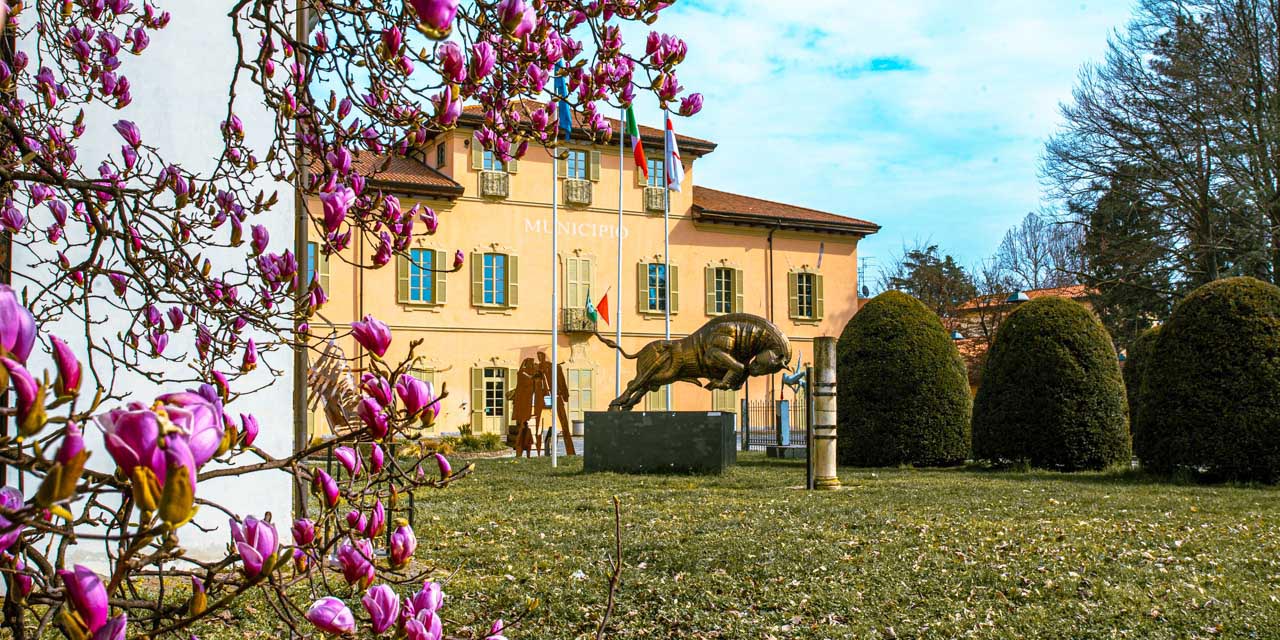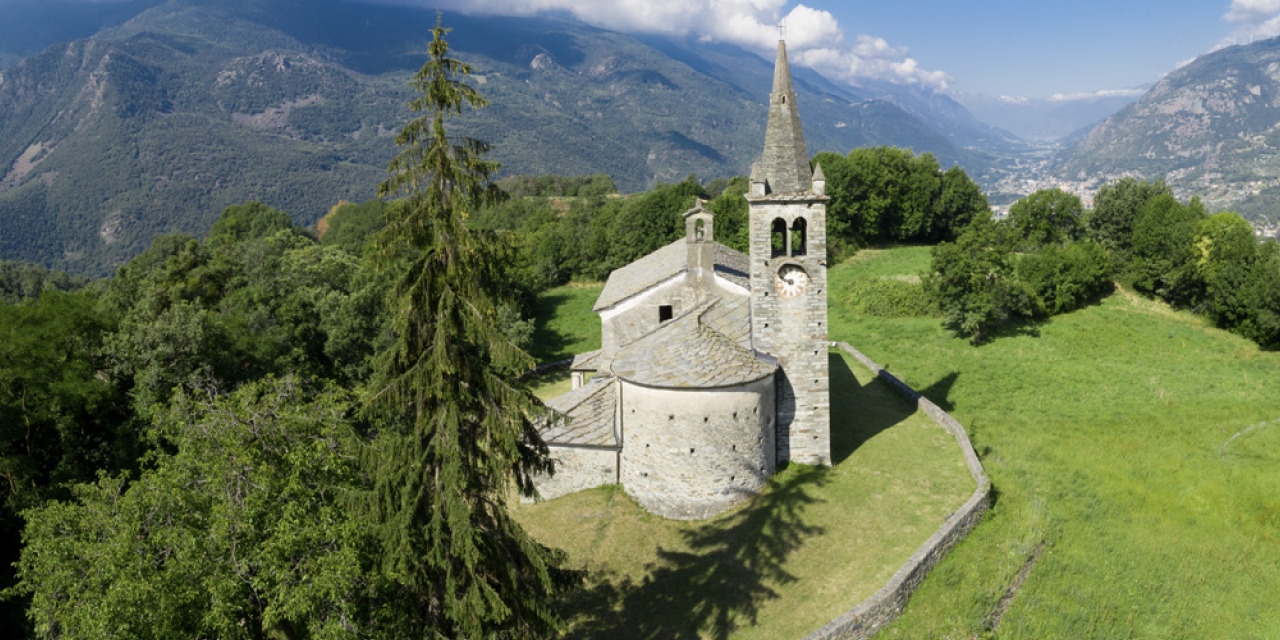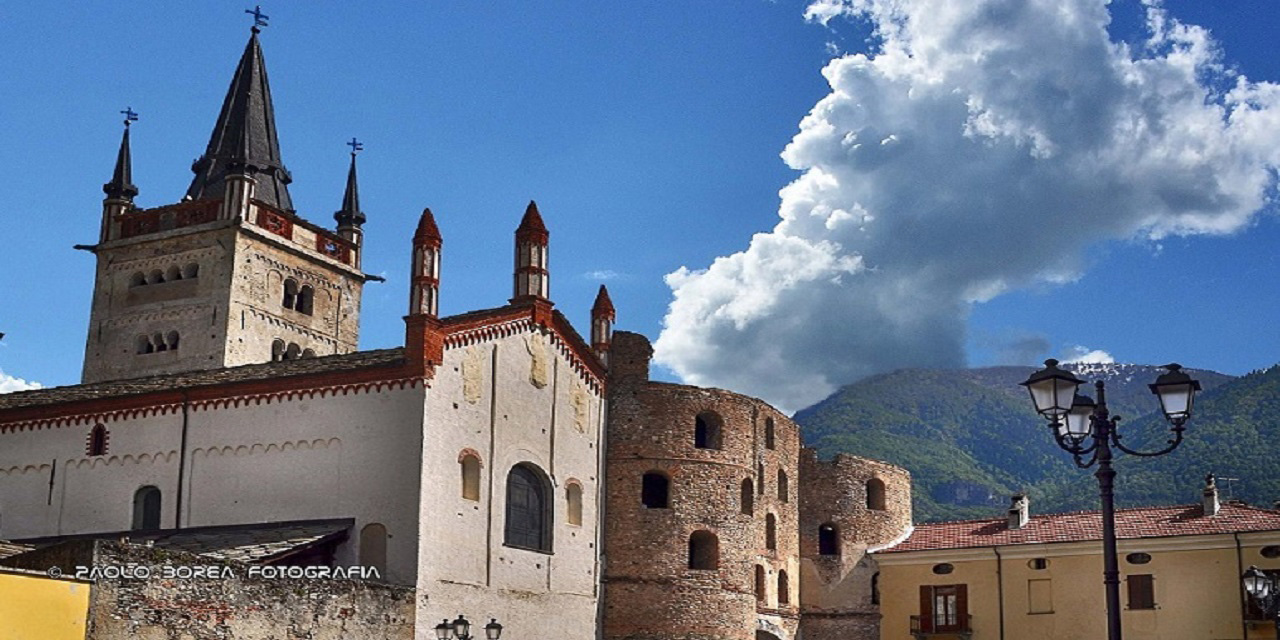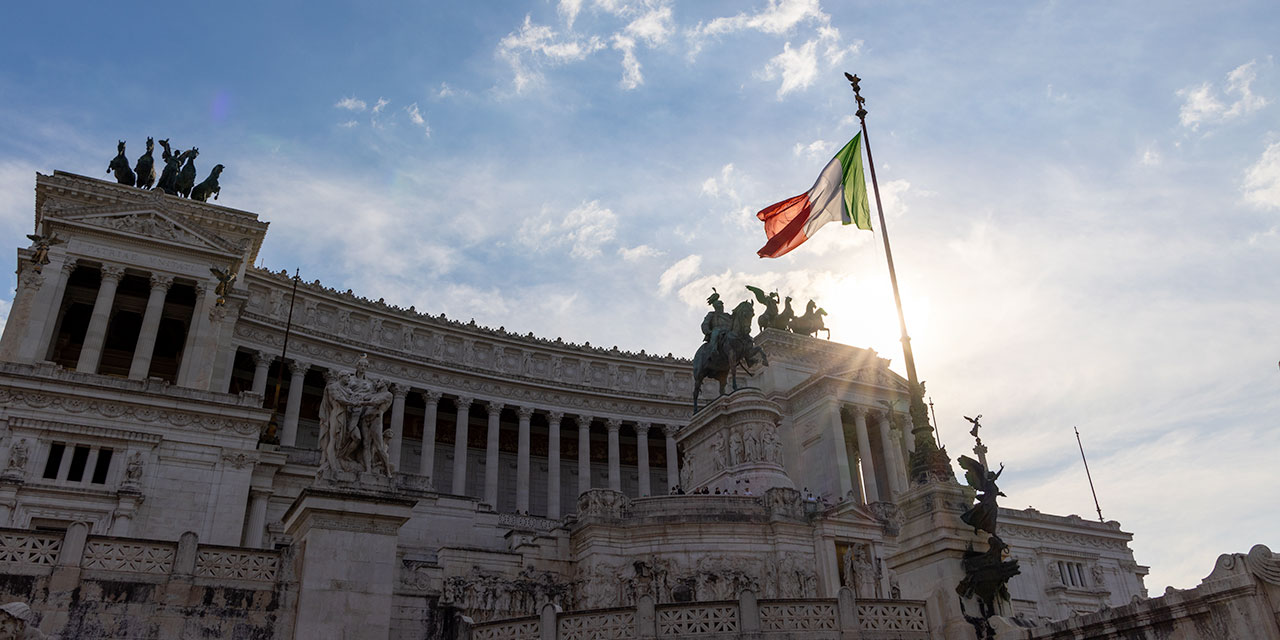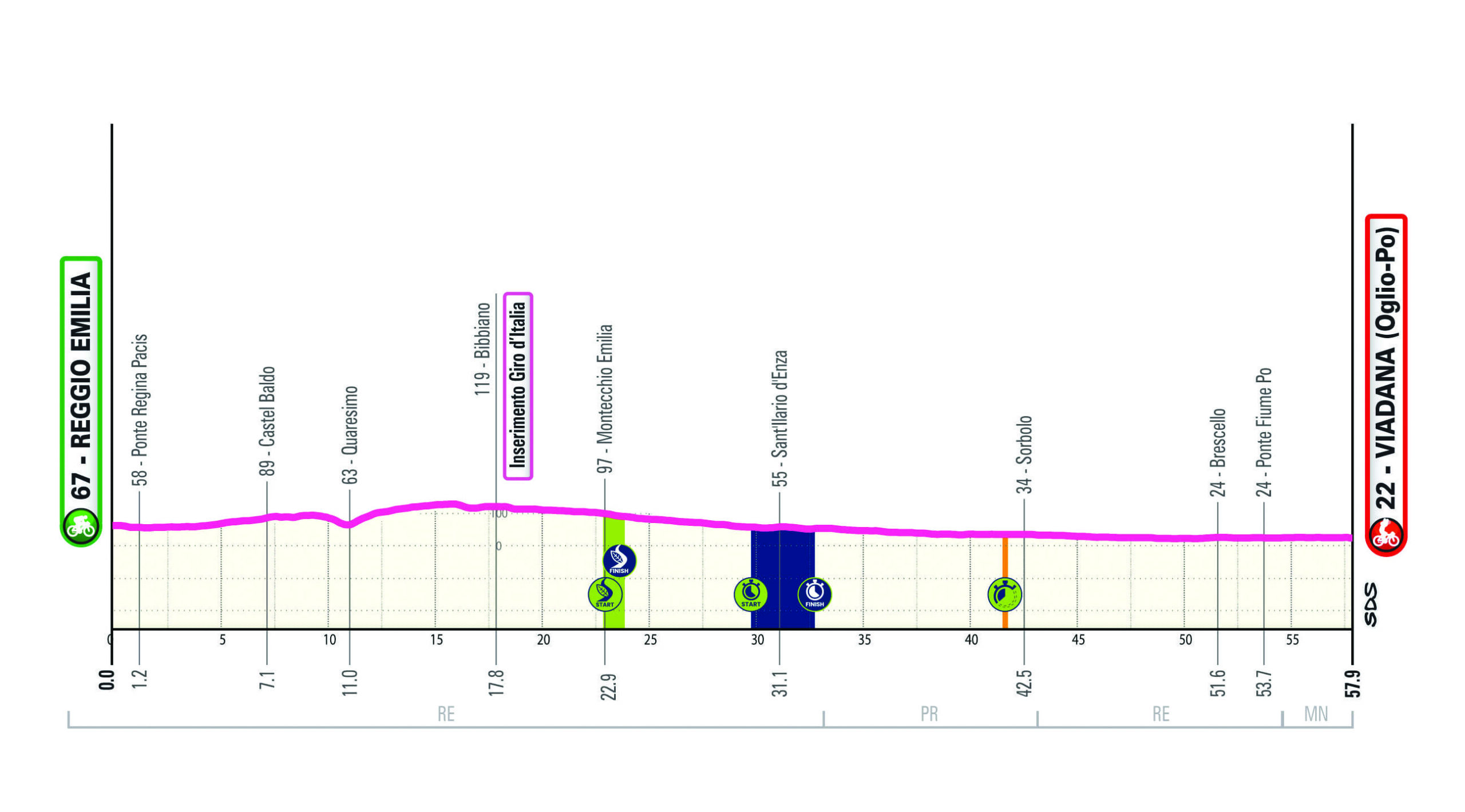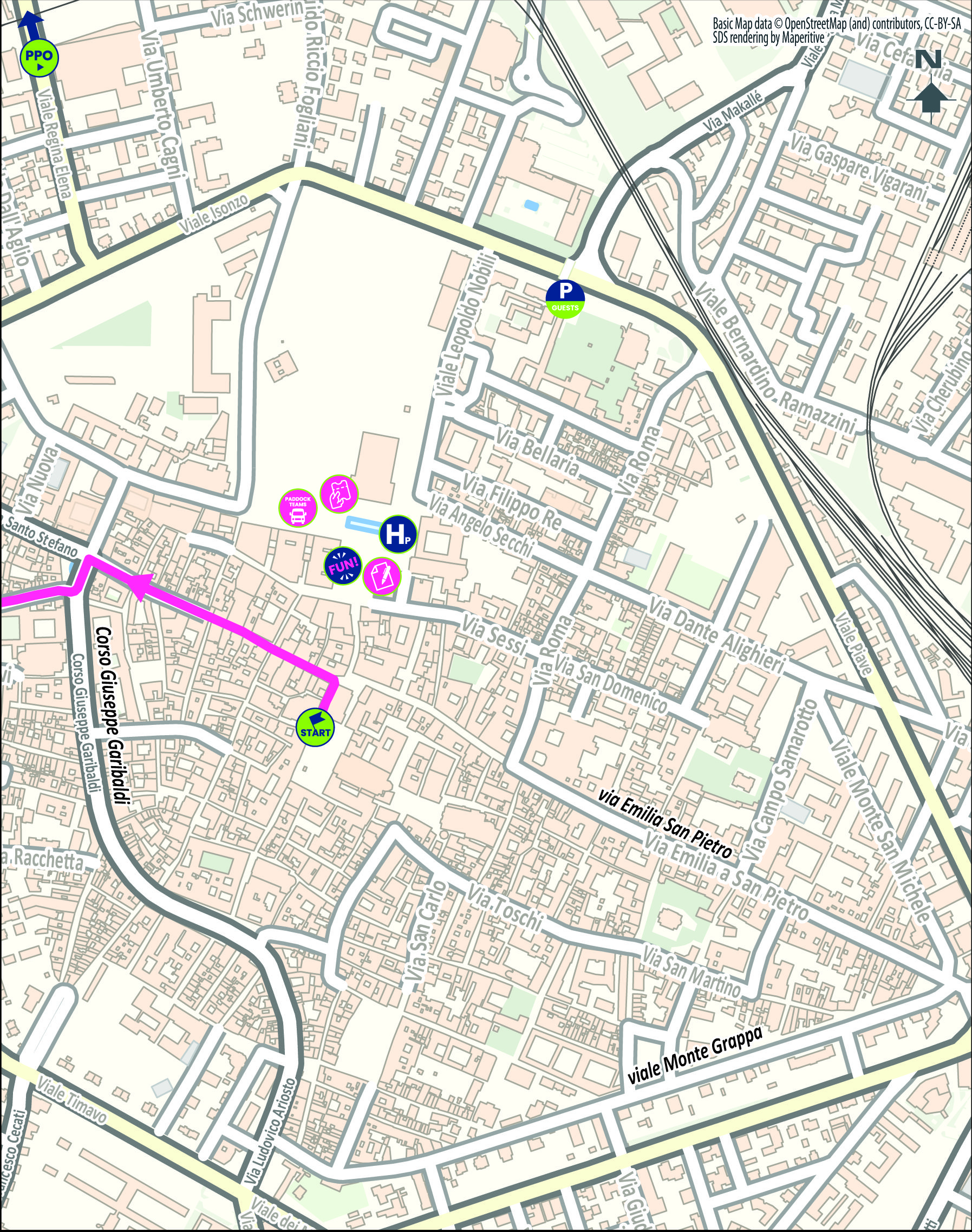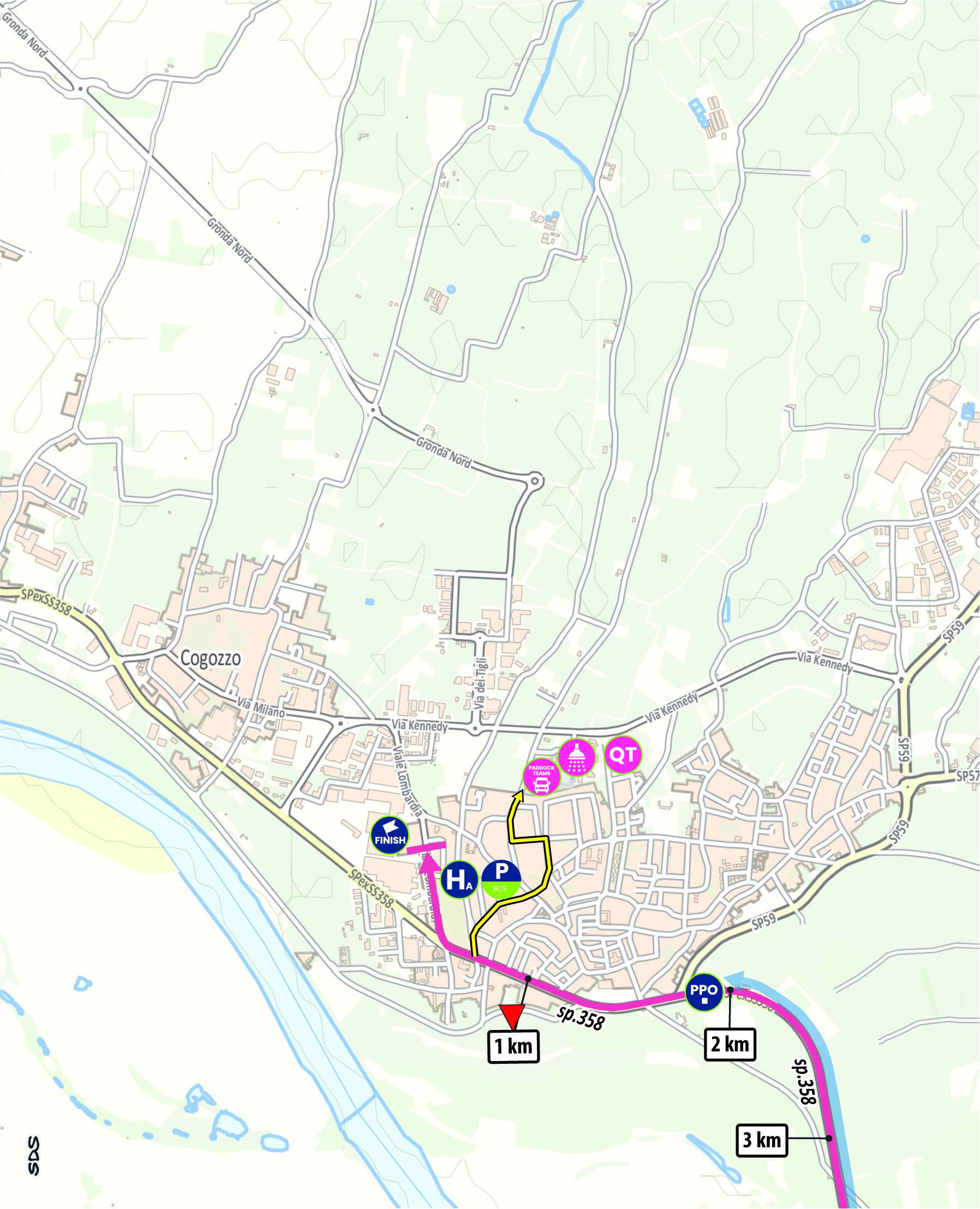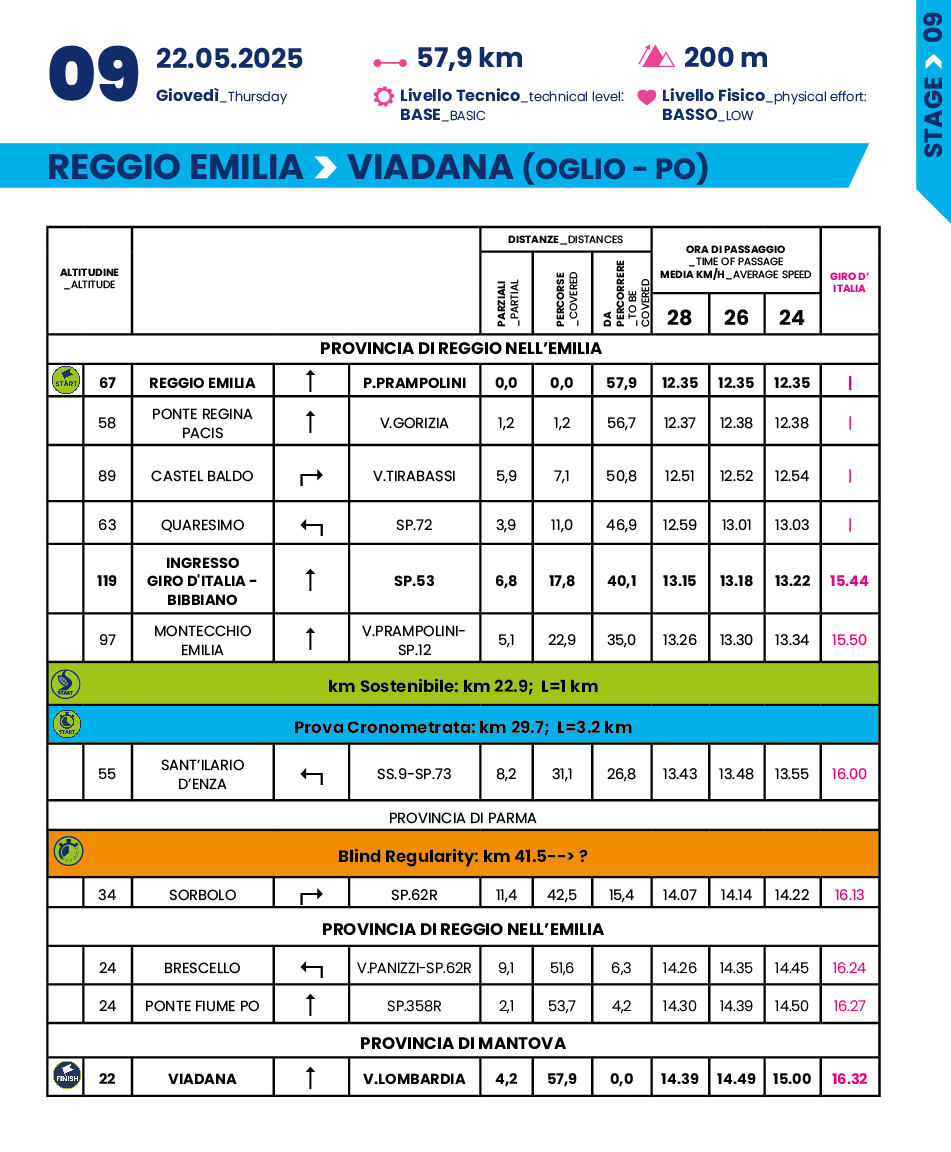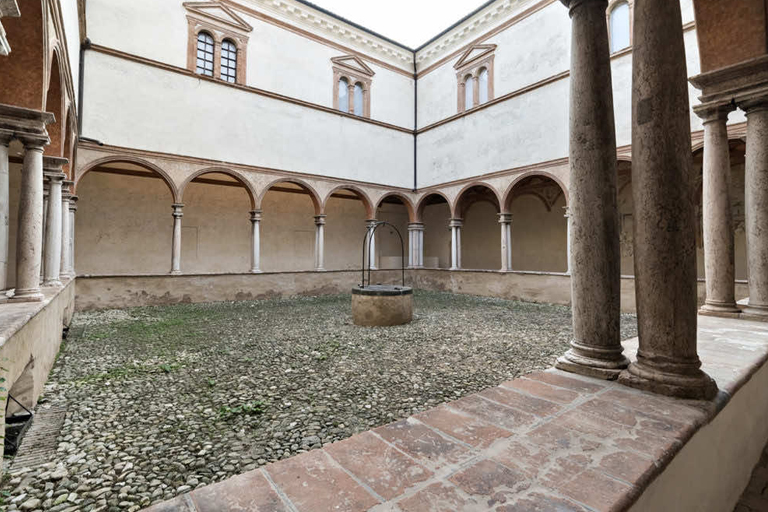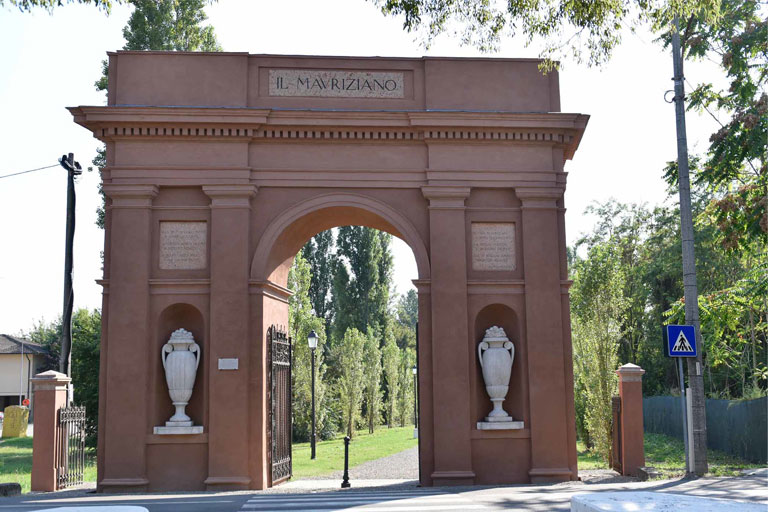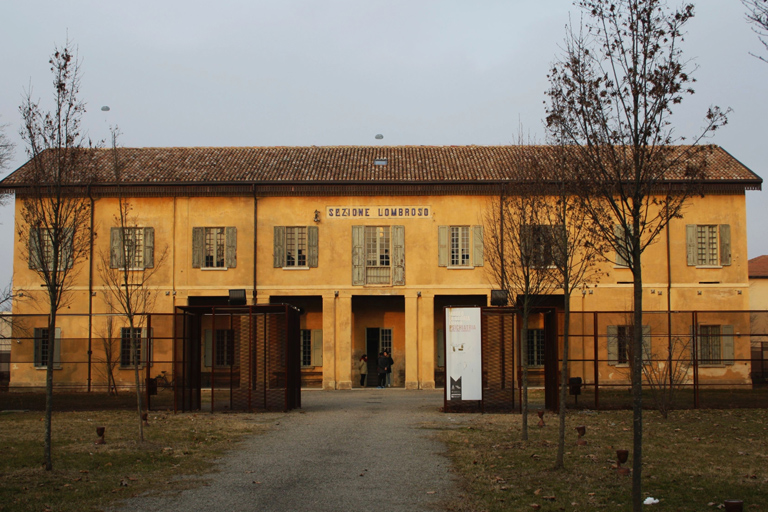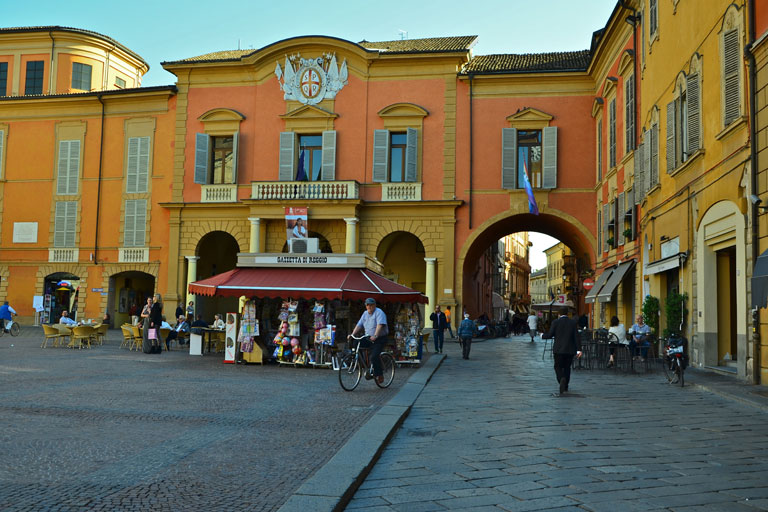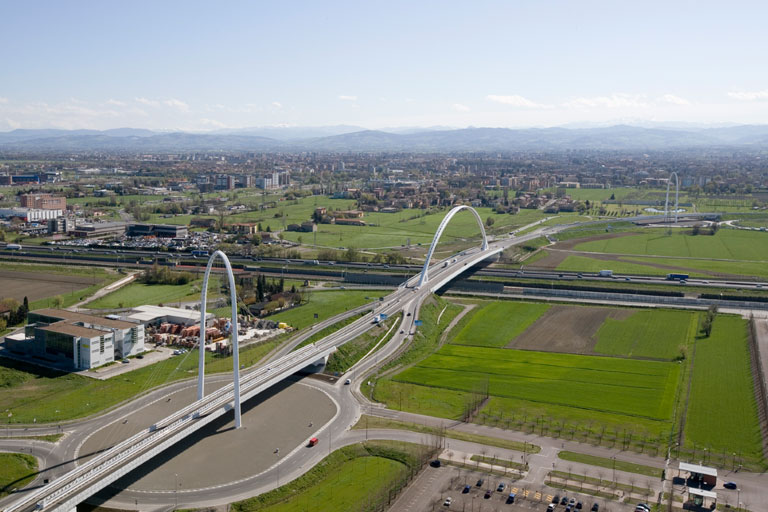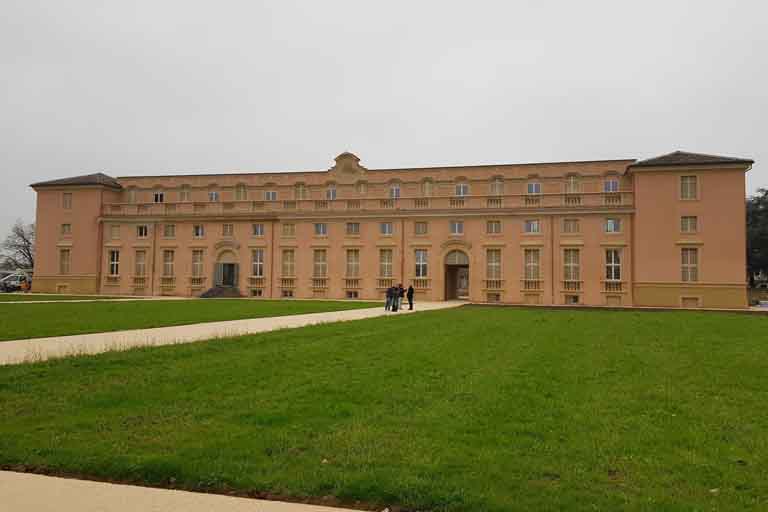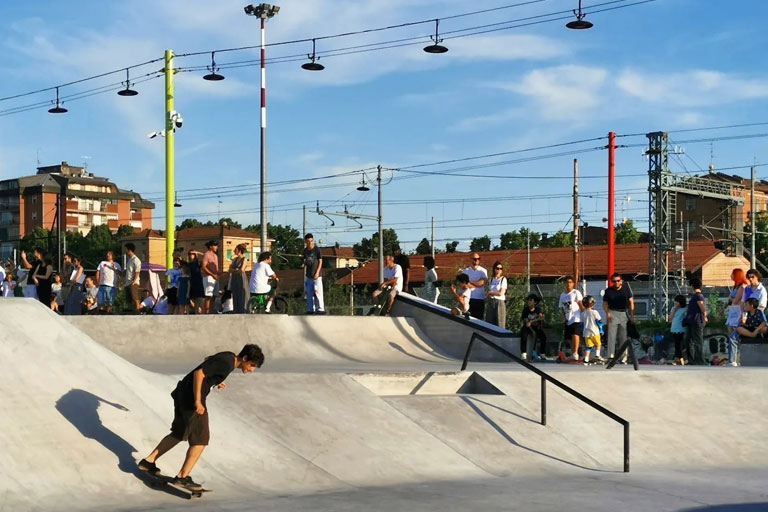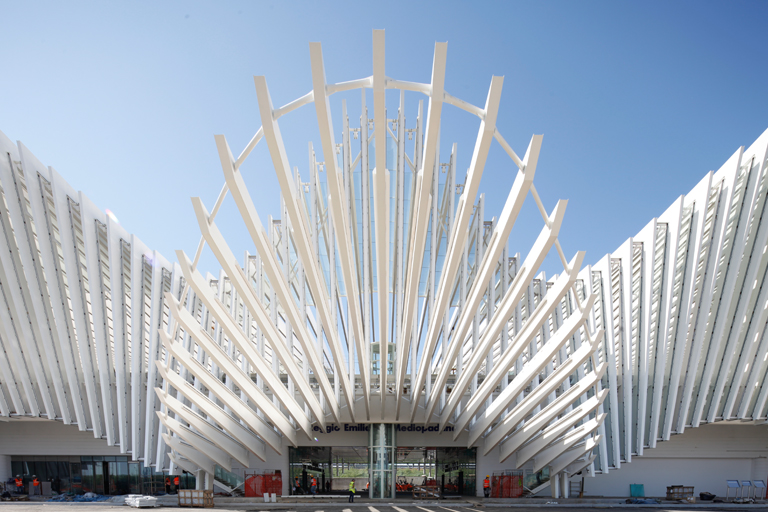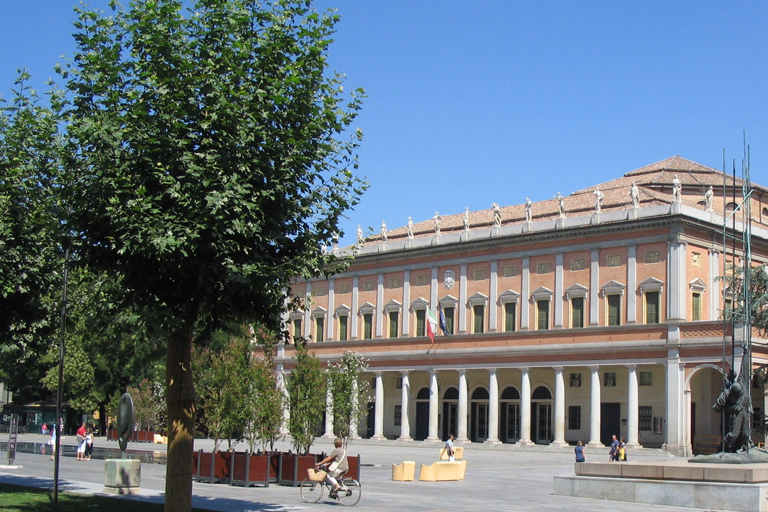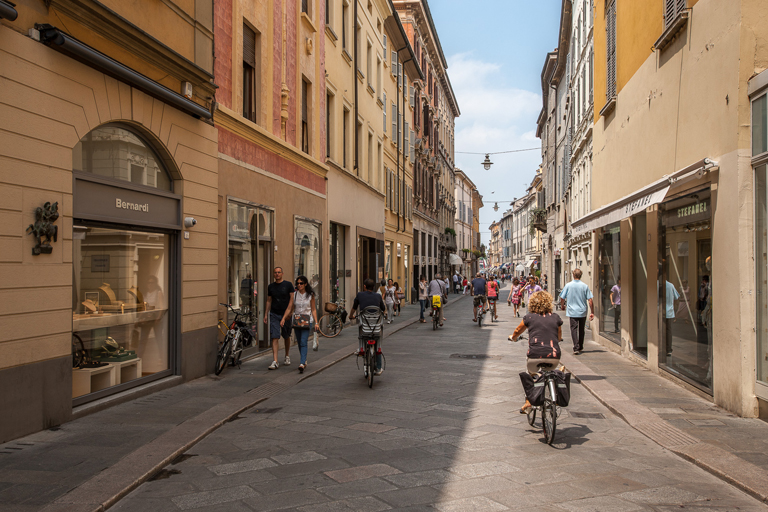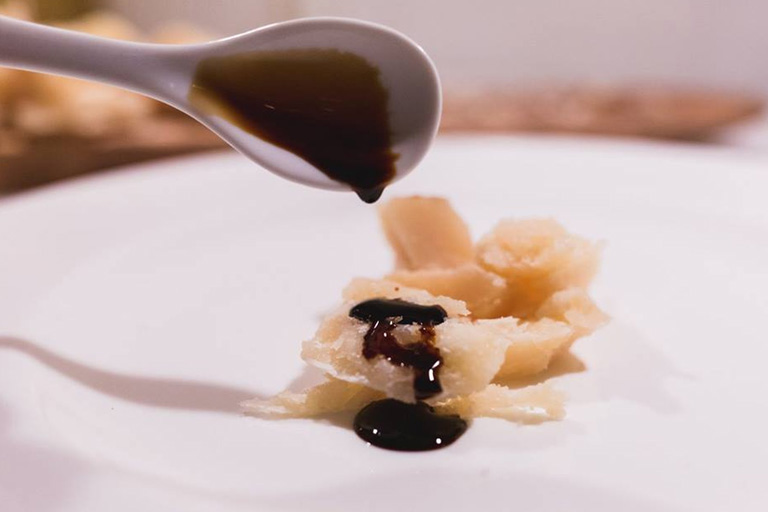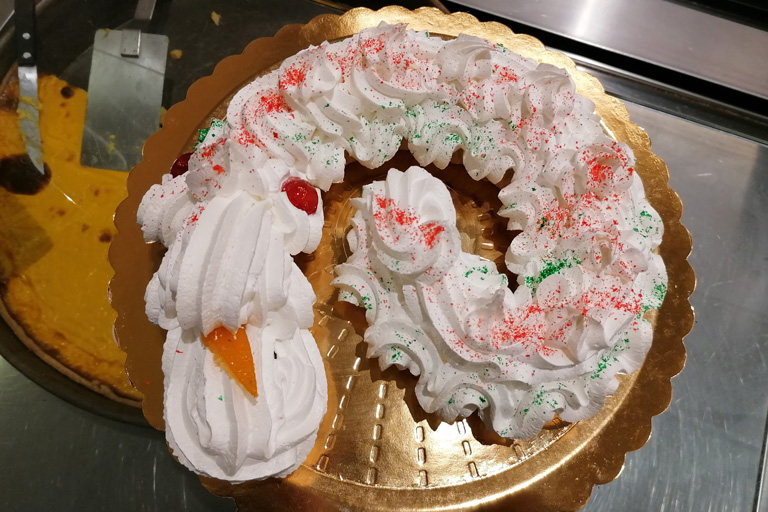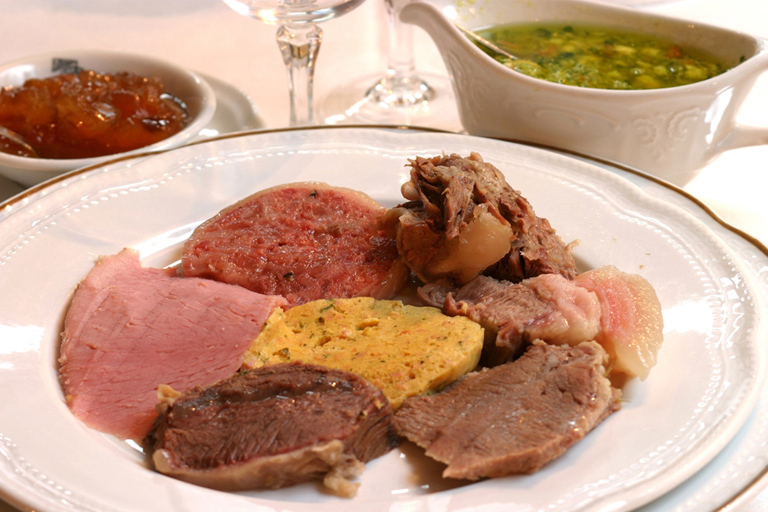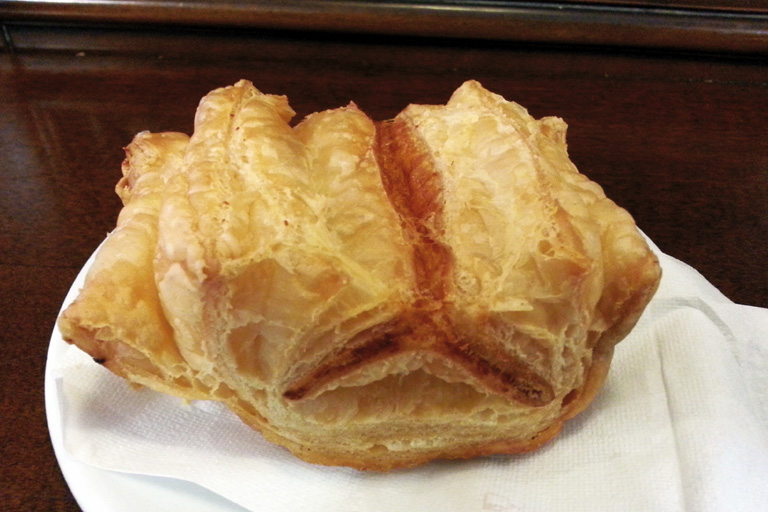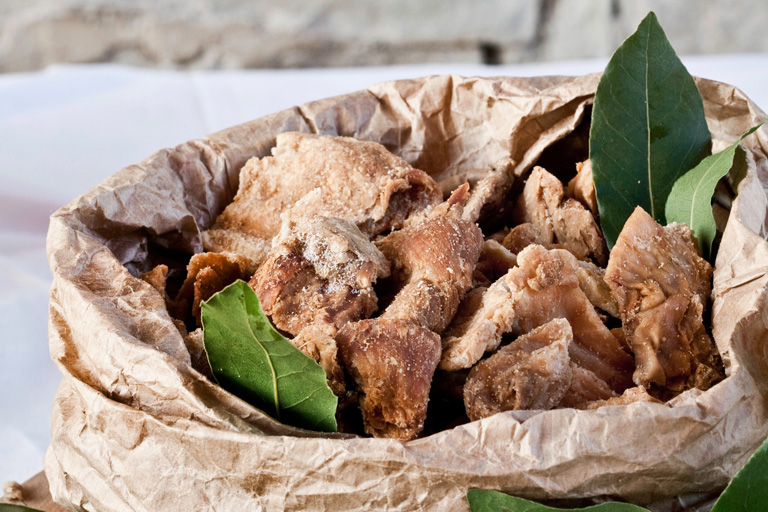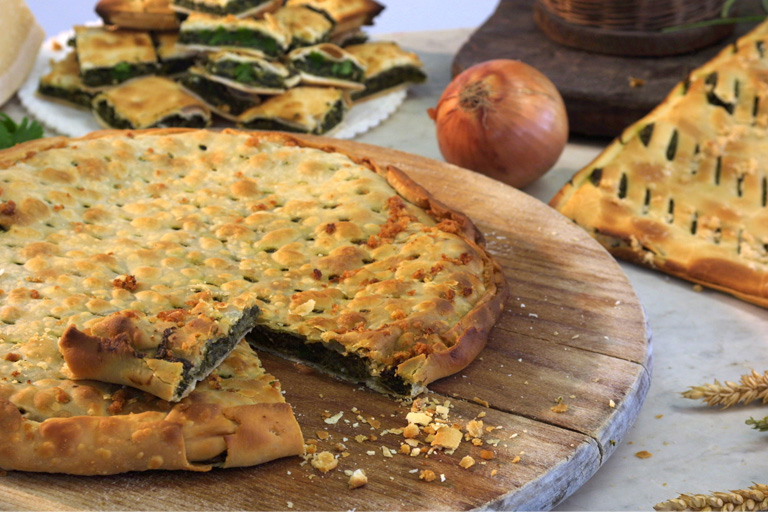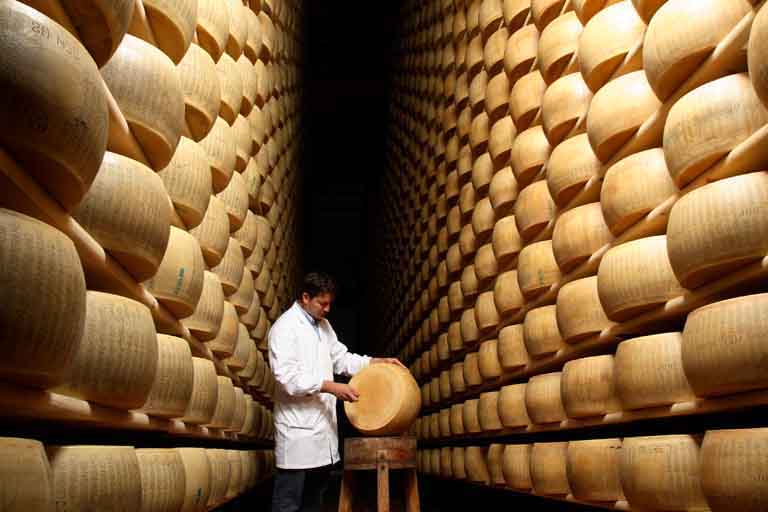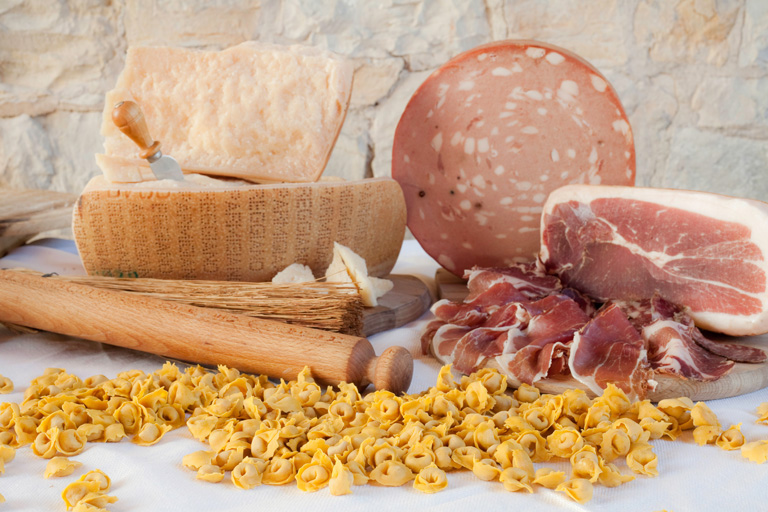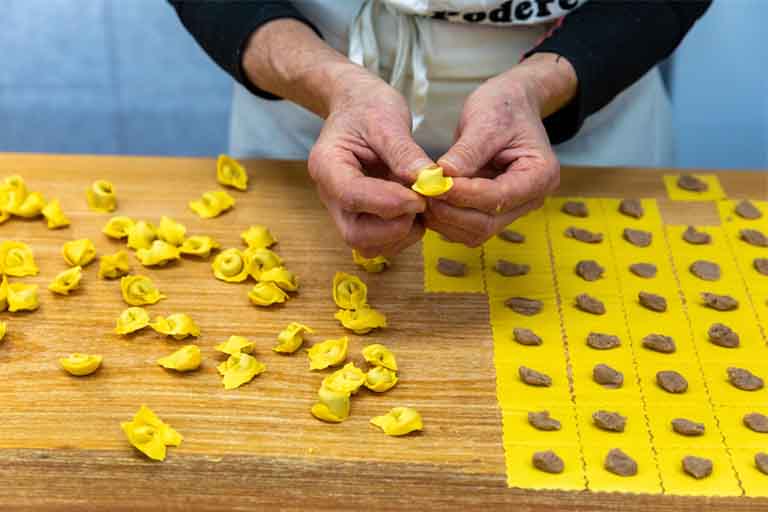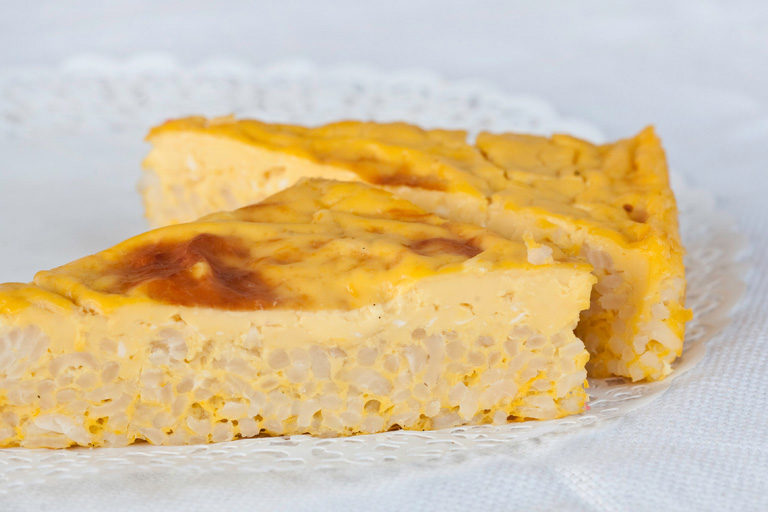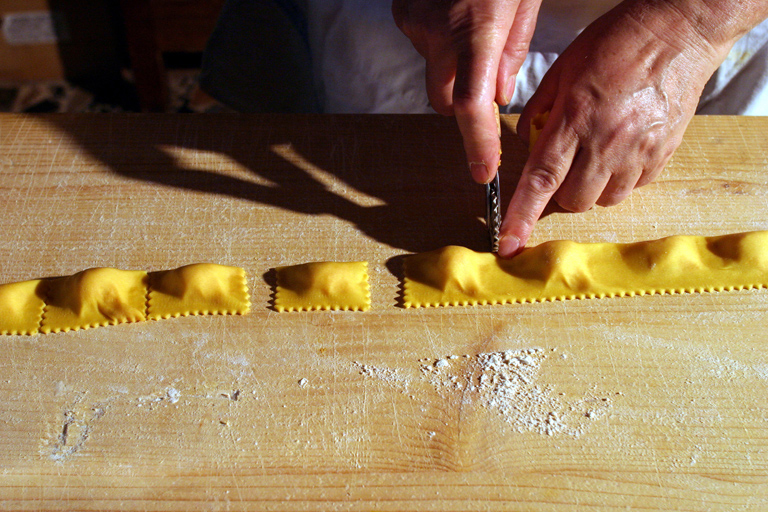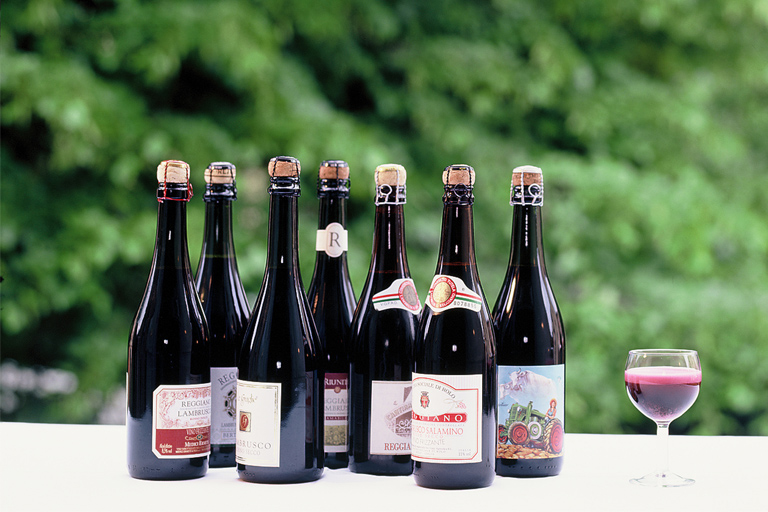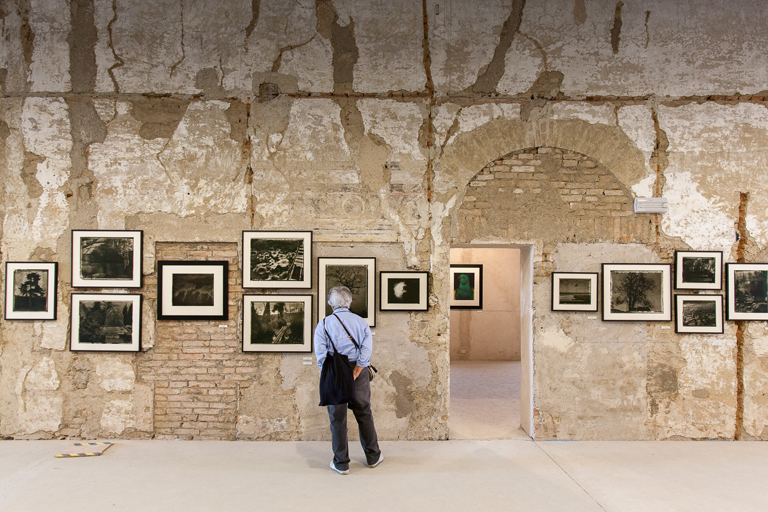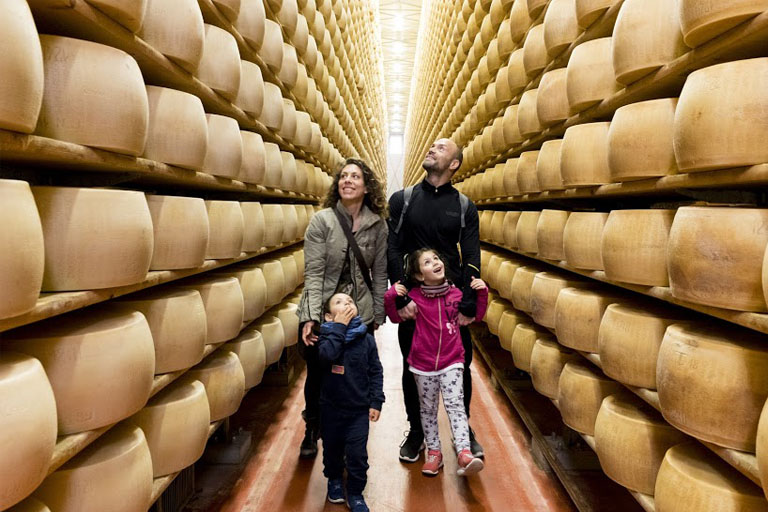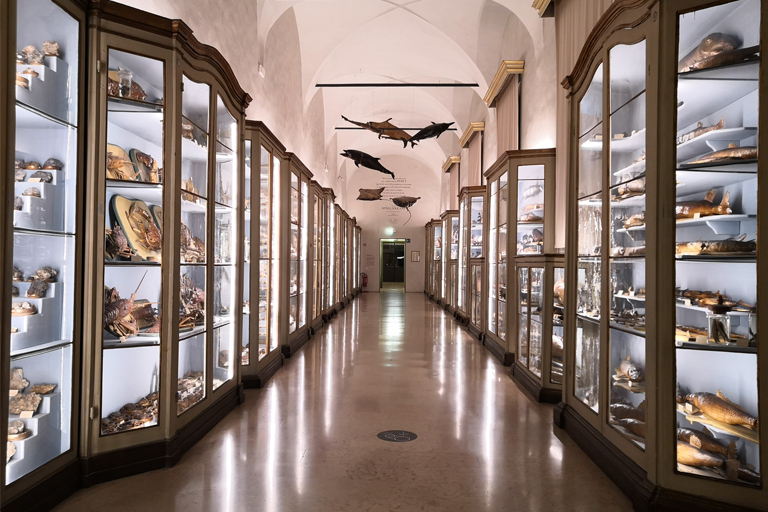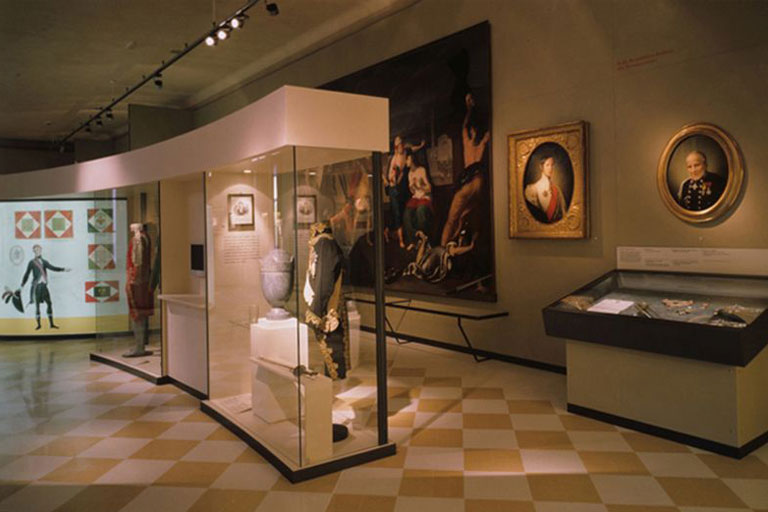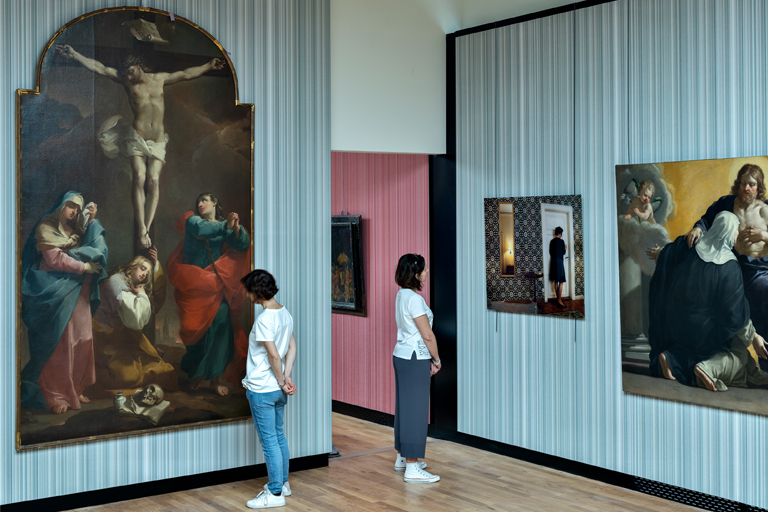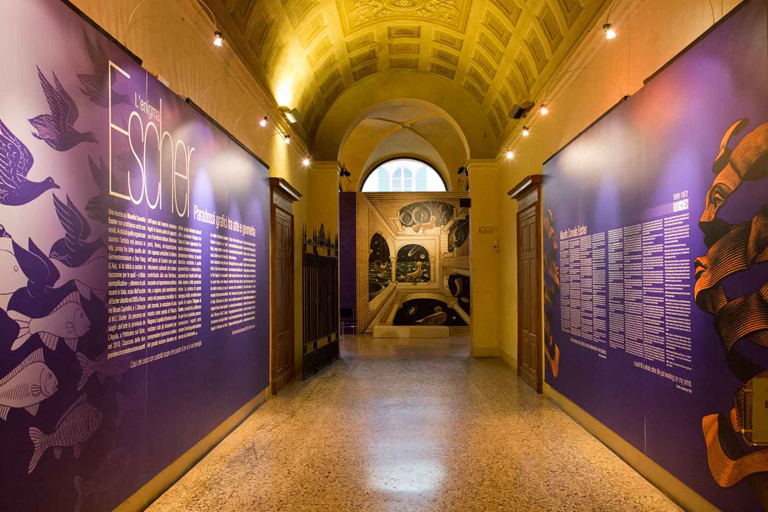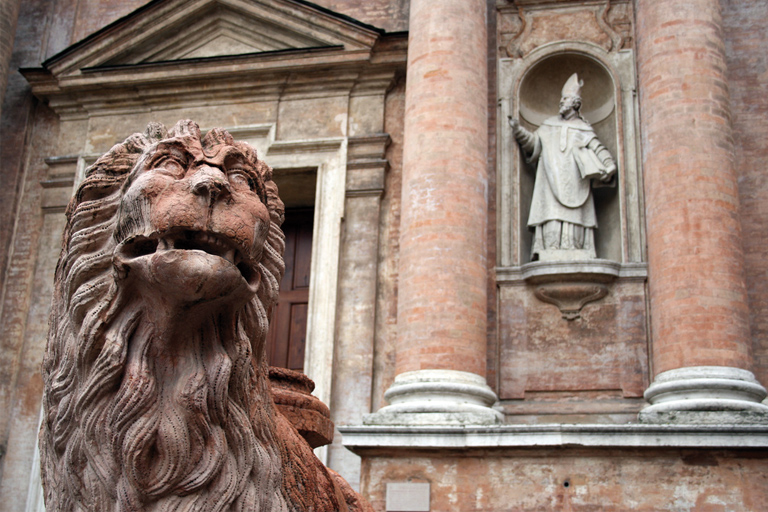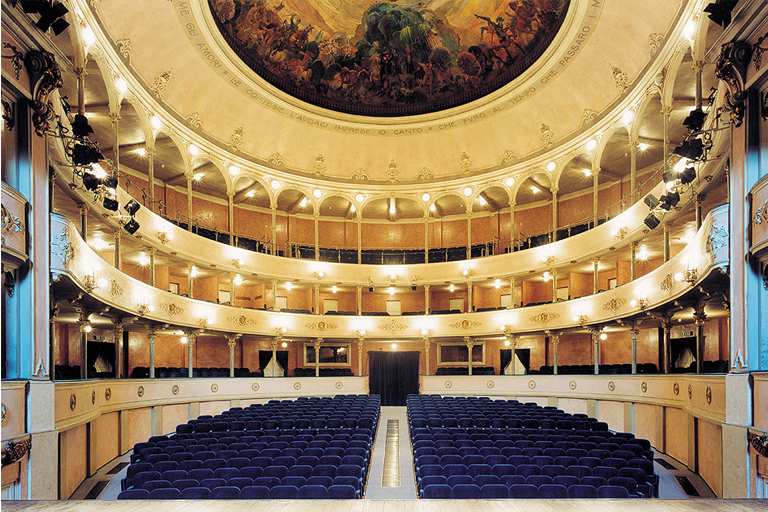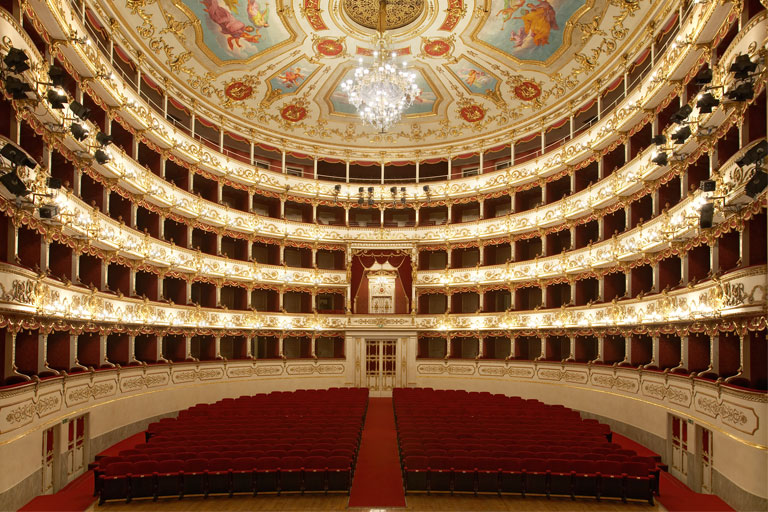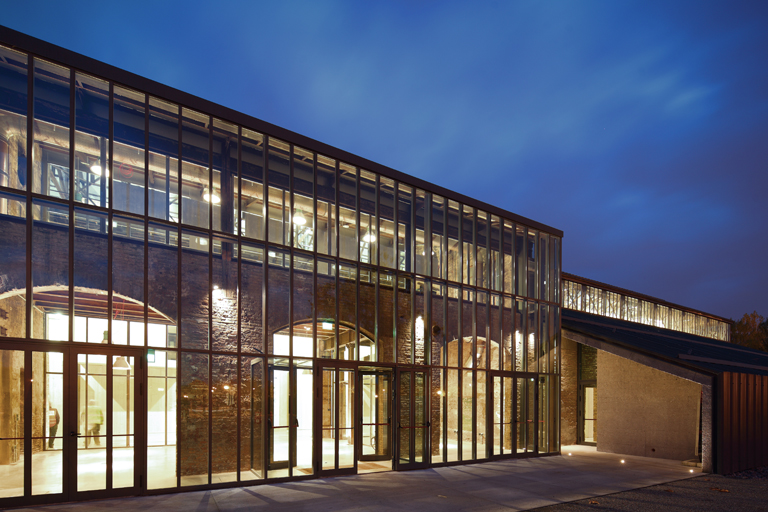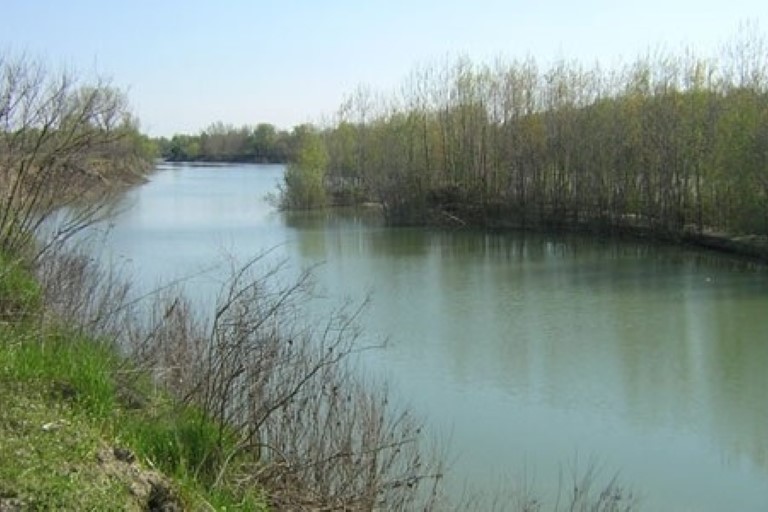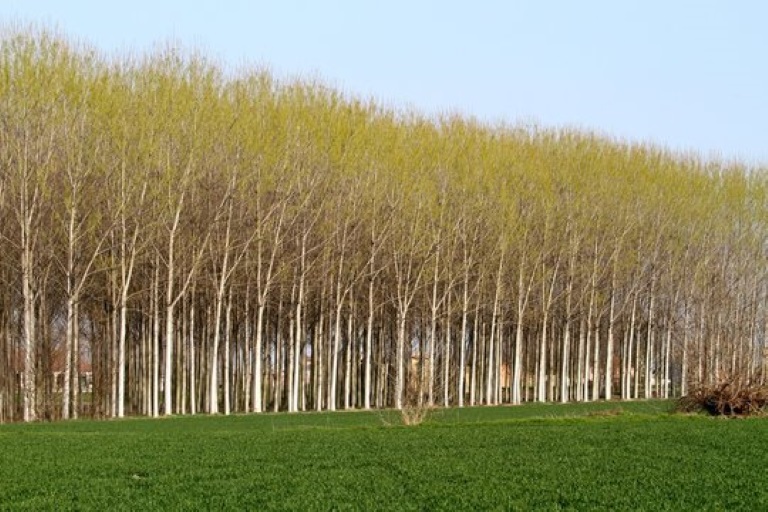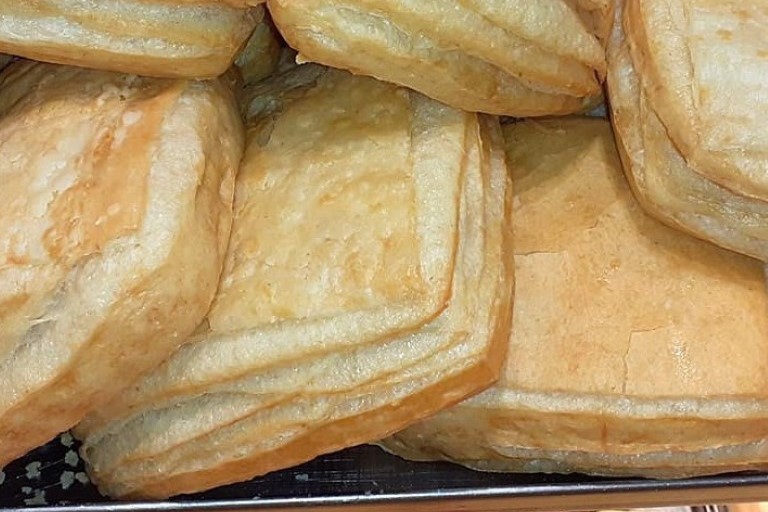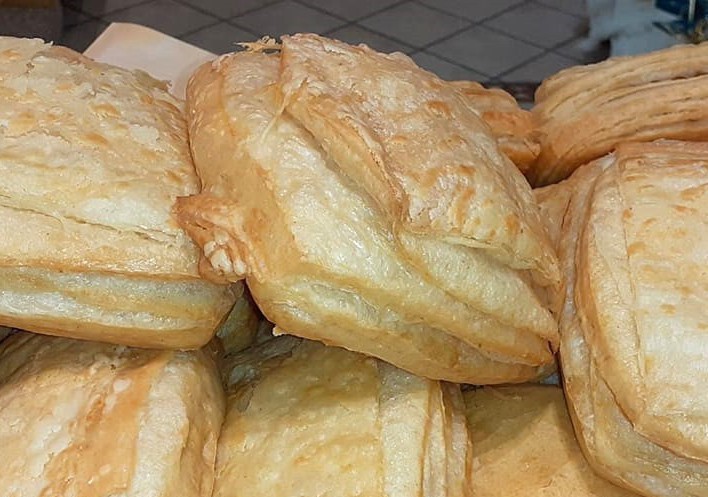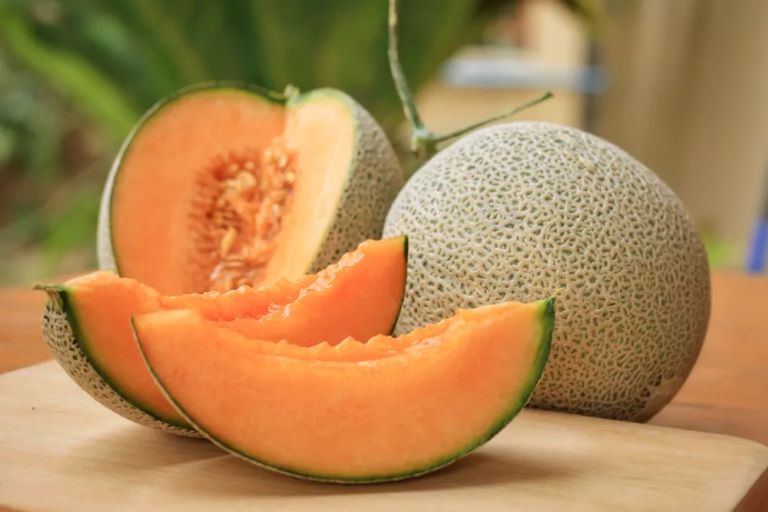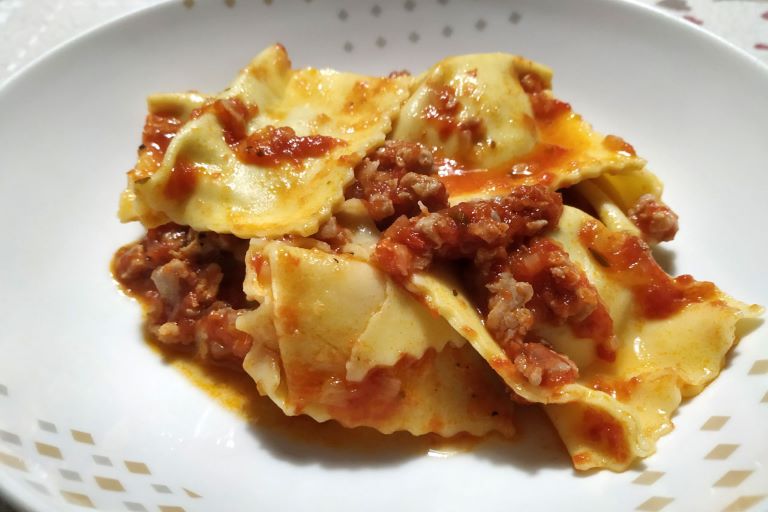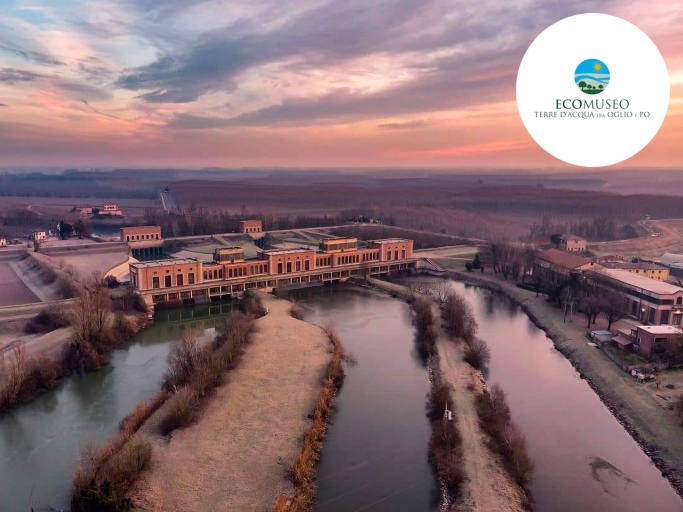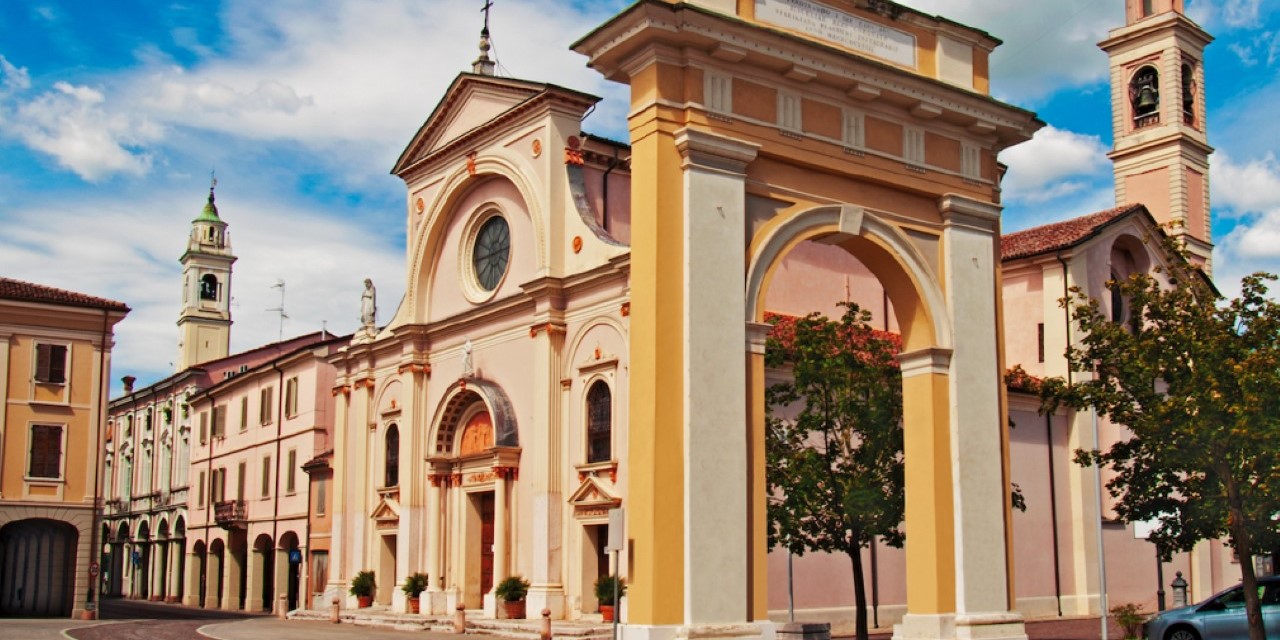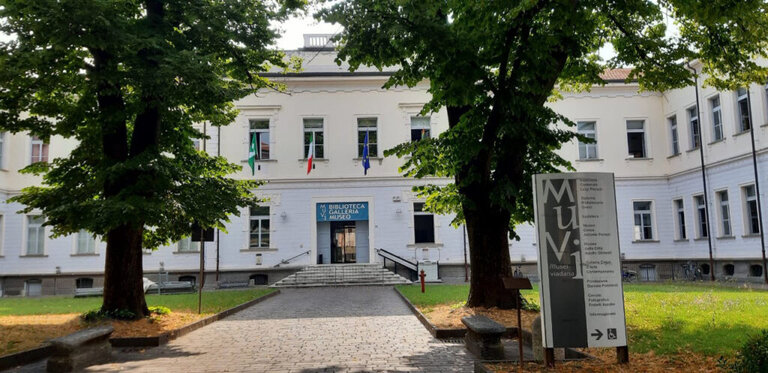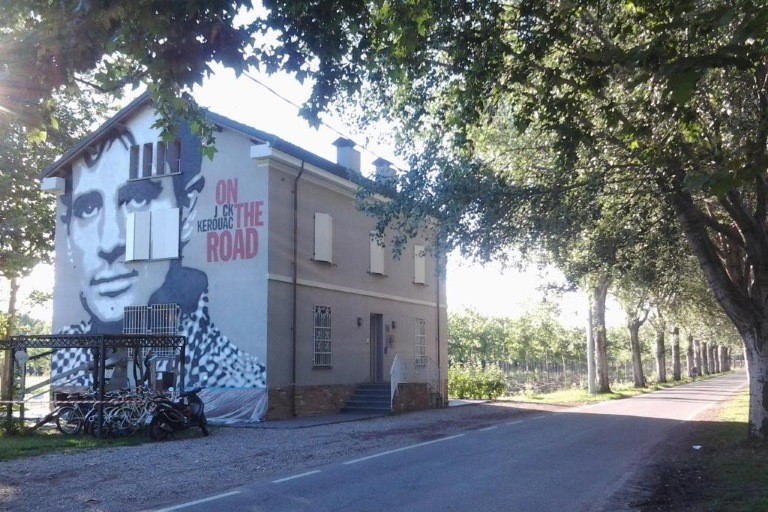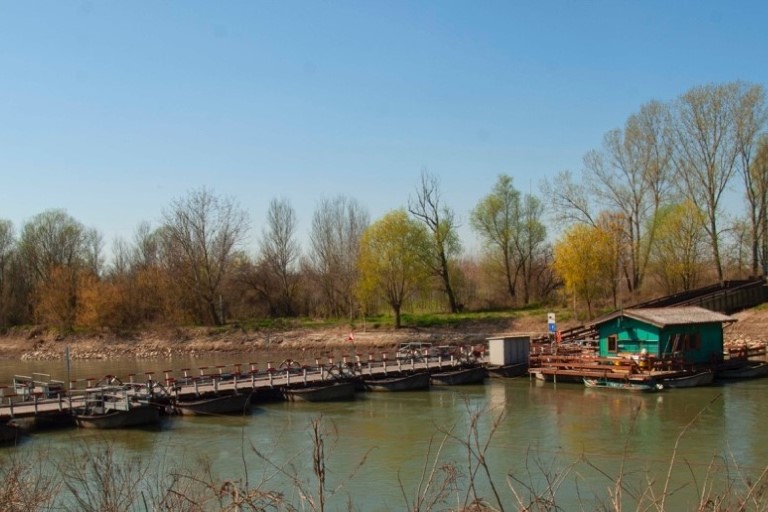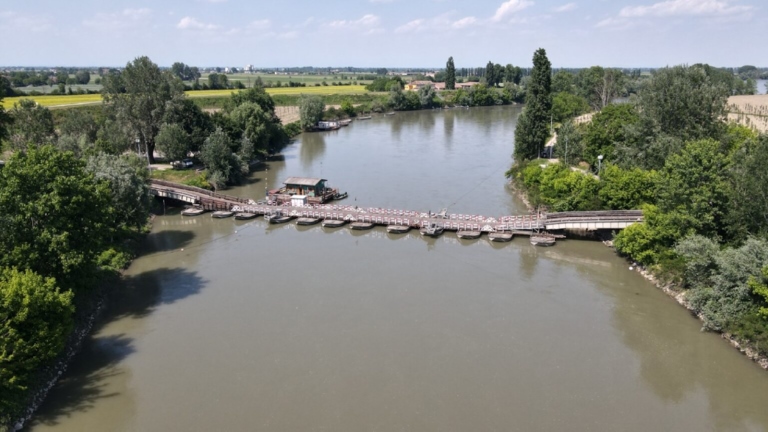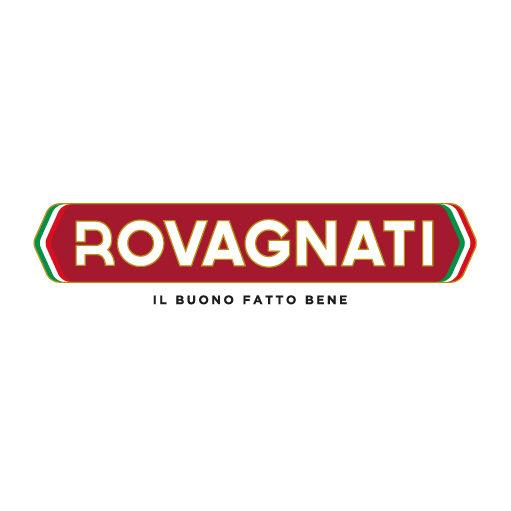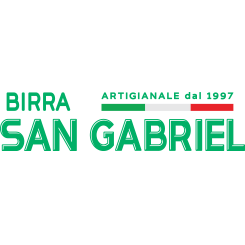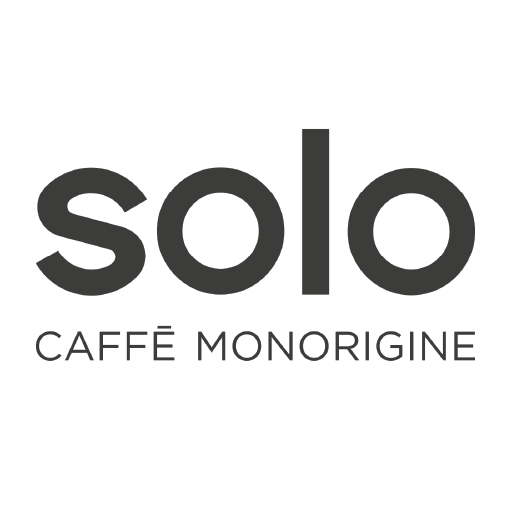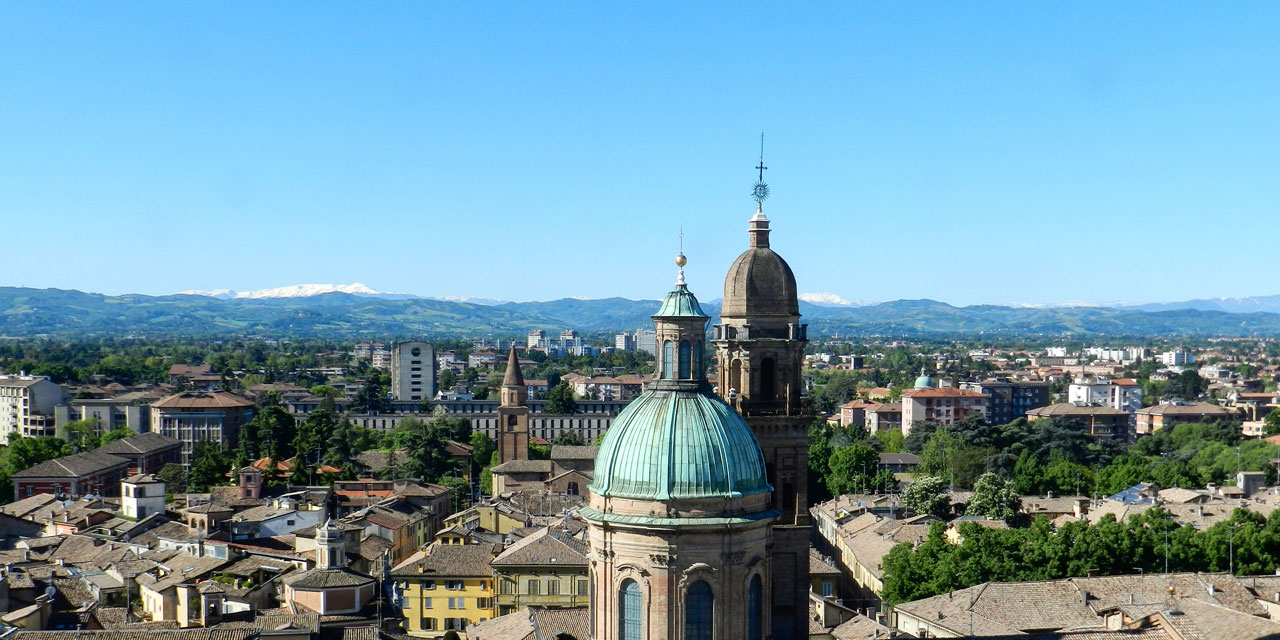
Stage
9
Thursday 22
May 2025
57,9 km
Altitude gain 200 mt
Technical Level: Basic
Physical Effort: Low

Reggio Emilia -
Viadana
Reggio Emilia - Vadana (Oglio - Po)
tourist info
Host city:
Reggio Emilia
Overview
Located in the vast Plain crossed by the two-thousand-year-old Via Emilia, about 50 km from Bologna, it’s impossible to miss from the High-Speed train or while traveling along the Autostrada del Sole. Its landmarks – the Mediopadana High-Speed train station and the “Sails” of Santiago Calatrava’s bridges – are unmistakable reference points.
Reggio Emilia is known as the “City of the Tricolour”: on January 7, 1797, the tricolour flag that would become the Italian national flag was adopted here. With its long history, treasures, welcoming squares, and numerous monuments, Reggio Emilia is an art city that is a pleasure to discover; with its Mannerist and Baroque domes, its squares, and traces of its medieval and Renaissance past, which follow the vestiges of Roman Regium Lepidi, it is a treasure trove of authentic hidden gems. It was the land of some of the most important figures in Italian history, such as Matilde di Canossa, the poets Matteo M. Boiardo and Ludovico Ariosto, and the painters Antonio Allegri, known as Correggio, Antonio Fontanesi, and Antonio Ligabue, the photographer Luigi Ghirri.
Gastronomy
The tradition of good Reggio Emilia cuisine, simple and natural, is reflected in the numerous restaurants and trattorias where you can taste excellent dishes handed down from generation to generation. The basic products come from the land and animals, which is why it is referred to as “poor cuisine”. These are strong flavors born from the need to compensate for the lack of expensive and refined ingredients. First and foremost is the sfoglia (uncut fresh pasta sheet), made with un-germinated flour, farm eggs, robust cinnamon and…”hands at a balanced warmth”.
Parmigiano Reggiano PDO, appreciated and distributed in Italy and abroad, is another typical product described in the recipes of famous culinary treatises of the past and praised for its peculiar properties. According to tradition, the cheese wheel must be cut with the “coltellina” with an olive leaf blade that divides the blocks into irregular pieces capable of highlighting qualities such as the granular and rough surface.
Cappelletti in broth, the undisputed stars of the Holidays, are the princes among first courses, alongside green and pumpkin tortelli. Within the Reggio Emilia tradition, the recipe varies slightly depending on the family and locality (mountains, lower Reggio Emilia, and the city center), as do the sizes, which tend to increase as you descend towards the “Bassa” (lower area).
Traditional Balsamic Vinegar of Reggio Emilia, a precious highlight of Reggio Emilia cuisine, enriched the dowries of young brides from noble families and, collected in small barrels, was used as a medicine, but the perfume, aroma and sweet and sour taste have convinced gourmets to make delicious use of it in the kitchen.
Erbazzone is a typical savory pie from Reggio Emilia, stuffed with a very flavorful filling: chard or spinach, onion, garlic, breadcrumbs and plenty of Parmigiano Reggiano. There are some variations: with rice in the Apennines or without pastry in Correggio.
Wine and beverage
No meal is complete without a good glass of Lambrusco, one of the most well-known and appreciated Italian wines in the world. Its character is as diverse as its colours and bubbles, all different in a glass. Its characteristics give life to an intense and sparkling wine, which has always accompanied the typical Reggio Emilia cuisine.
Spergola is a typical grape variety from the hilly area around Scandiano with millenary roots: the first traces date back to the eleventh century, in the possessions of Countess Matilde di Canossa. The wine that derives from it, a still or sparkling white, encapsulates the quality of the Reggio Emilia territory, the gently rolling landscape in which it is produced and its long history.
Acqua d’orcio is a typical Reggio Emilia drink flavored with licorice and anise, which was distributed in the bars of the historic center. It was the most beloved thirst-quenching drink of the Reggio Emilia people, when popsicles, granitas, and ice cream were a luxury reserved for a few. There are various recipes for acqua d’orcio in Reggio Emilia cookbooks or passed down orally, often without dosages.
Points of interest
The Cathedral of Reggio Emilia, built around 857 AD on a pre-existing Roman structure, houses a valuable 15th-century wooden choir and significant works by 16th and 17th-century Reggio Emilia artists. The facade is dominated by the Madonna and Child and the Fiordibelli spouses, commissioners of a chapel that preserves a precious altarpiece by Guercino. In the Crypt (12th-13th century), a splendid late Roman mosaic from the 4th century AD was found, now kept in the Diocesan Museum.
The Basilica of San Prospero is dedicated to the Reggio Emilia bishop Prospero, the city’s patron saint. Of particular value, in the apse basin, is Camillo Procaccini’s Universal Judgment and the precious wooden choir by De Venetiis, from 1546. In the fifth chapel on the right is the copy of Boulanger’s “The Night”, a famous masterpiece by Correggio requisitioned by the Duke of Modena and now exhibited in Dresden. Outside, you can admire six late Romanesque lions and the 16th-century octagonal tower, recently restored and open to visitors.
The Cloisters of San Pietro are a charming example of the Italian Renaissance, they were part of an ancient Benedictine monastery used over the centuries in the most varied ways. The two cloisters, although connected, have different styles: the small one has a Renaissance layout, while the larger one is a typical example of Mannerist architecture inspired by Palazzo Te in Mantua. Subject to a recent restoration, they now host exhibitions and cultural events of great importance.
Since 1434, the Town Hall has its seat in the building that overlooks Piazza Prampolini, the cultural center of the city. Inside is the Tricolour Flag Hall, designed as an archive of the Este Duchy: here on January 7, 1797, the First Tricolour Flag was proclaimed as the banner of the Cispadane Republic, born under the protection of French arms. In the adjacent rooms, the Tricolour Flag Museum documents the historical and political context in which the Italian flag was born, up to the Risorgimento and the Unification of Italy.
The municipal theater of Reggio Emilia, named after the Reggio Emilia actor Romolo Valli, is considered one of the most beautiful theaters in Italy. Built in neoclassical style, it was designed by the architect Cesare Costa and built between 1852 and 1857. Here Luciano Pavarotti made his debut in 1961 in “La Boheme”. On the nearby square, there are two other theaters: Ariosto, dedicated to the well-known Reggio Emilia poet, and Cavallerizza, a former horse riding arena.
Made of white painted steel, the three Calatrava bridges, with their sinuous and light shapes, present to travelers arriving from the highway the Reggio Emilia of the 21st century. In 2013, the Mediopadana high-speed train station was added: the characteristic wave shape, the play of lights, the white steel and glass structure have made it one of the most admired works of contemporary architecture and one of the most beautiful stations in the world.
Viadana (Oglio - Po)
Overview
Situated along the Po River, Viadana is a small yet historically rich town with a strong agricultural and trading tradition. It offers a peaceful atmosphere with charming historical buildings and open green spaces, making it an ideal place for outdoor activities such as cycling and fishing.
Gastronomy
Viadana’s culinary tradition is deeply tied to its fertile lands and agricultural heritage. The region is renowned for its production of watermelons, melons, and pumpkins, which thrive in the nutrient-rich soil and mild climate, resulting in their sweet and intense flavors. Viadana’s watermelons are large and juicy, providing a refreshing treat on hot summer days, while its melons are known for their unmistakable aroma and soft pulp, often paired with prosciutto crudo in a classic local dish.
One of the most emblematic dishes of the area is the pumpkin tortelli, a signature of Viadana’s and Mantua’s cuisine. These raviolis are filled with pumpkin, macaroons, mustard, and Parmigiano Reggiano, creating a perfect balance of sweet and savory flavors. They are served in two main variations: with butter and sage, which highlights the delicacy of the filling, or with a hearty tomato and sausage sauce for a richer taste. Traditionally prepared for festive occasions, tortelli di zucca are a symbol of Viadana’s culinary heritage.
Another local specialty is the luadel, which has recently received De.Co. (Denominazione Comunale) recognition, attesting to its historical and cultural significance. Originally, it was a “test bread” used to check the temperature of wood-fired ovens in Viadana’s farmhouses before baking larger loaves. Made with a simple dough of flour, water, and yeast, luadel is baked quickly, resulting in a crispy exterior and a soft interior. Today, it is enjoyed as a traditional bread, often served alongside local cured meats and cheeses.
Wine and beverage
The Lambrusco Viadanese is the signature wine of the area, taking its name from Viadana in the province of Mantua. The grape variety is believed to have originated from wild vines, as suggested by the name “Lambrusco,” derived from the Latin “Vitis Labrusca,” meaning wild vine. These grapes were historically called “uzeline” or “oseline” because they grew at the edges of forests and were a favorite food for birds.
Also known as “Groppello Ruberti,” named after the enologist who identified it as the best grape variety in the province, Lambrusco Viadanese is primarily cultivated in Mantua, in the region bordered by the Oglio and Po rivers. It serves as the primary grape in the Lambrusco Mantovano DOC. The Lambrusco Viadanese grape features a medium-sized, pentagonal leaf with three lobes, sometimes five. Its mature clusters are medium-sized, long, cylindrical, and compact, with round, tightly packed berries. The thick-skinned, dark blue-black grapes are covered in a light bloom, while the pulp is juicy and neutral in taste.
Lambrusco Viadanese wine has a deep ruby-red color and intense aromas with fruity and floral notes of cherry and violet. It is notably tannic, full-bodied, yet harmoniously balanced.
Points of interest
One of Viadana’s main cultural centers is the MuVi (Musei Viadana), a complex housing several important institutions. It includes the Antonio Parazzi Civic Archaeological Museum, dedicated to local history and archaeology, and the Adolfo Ghinzelli City Museum, which explores Viadana’s past and its surrounding territory. The MuVi also hosts the Luigi Parazzi Public Library, home to over 100,000 volumes, and the Civic Gallery of Contemporary Art, a hub for exhibitions and cultural events. Additionally, the Historical Municipal Archive preserves the town’s historical memory.
Research, documentation, and publishing efforts are carried out by the Società Storica Viadanese and the Daniele Ponchiroli Foundation, both dedicated to promoting and preserving Viadana’s rich historical and cultural heritage.
Another key attraction is the Ecomuseo Terre d’Acqua, located between the Oglio and Po rivers. Recognized by the Lombardy Region, this ecomuseum showcases the agricultural and artisanal traditions of the floodplain. Its headquarters are in the historic Navarolo Agro Cremonese and Mantovano drainage plant in the San Matteo delle Chiaviche district. Built in 1923, this site represents an important example of industrial archaeology and environmental conservation. Notably, among the laborers involved in its construction was a young Learco Guerra, who later became one of Italy’s greatest cyclists, earning the nickname “The Human Locomotive”.
Among Viadana’s most significant religious buildings is the Archpriestal Church of Santa Maria Assunta and San Cristoforo in Castello, located in the historic center. This church serves as a veritable museum of sacred art, thanks to the extensive collection amassed by Monsignor Antonio Parazzi. Its paintings, sculptures, and sacred furnishings reflect the evolution of local religious art over the centuries.
Another historically and culturally significant site is the Prepositural Church of Santa Giulia V.M. in the district of Cicognara, where nationally relevant figures have played a role. Here, Don Primo Mazzolari, a major figure in 20th-century Italian Catholicism, conducted part of his ministry. Additionally, the church was once the residence of Nobel Prize-winning writer Grazia Deledda, who won the Nobel Prize for Literature in 1926.


